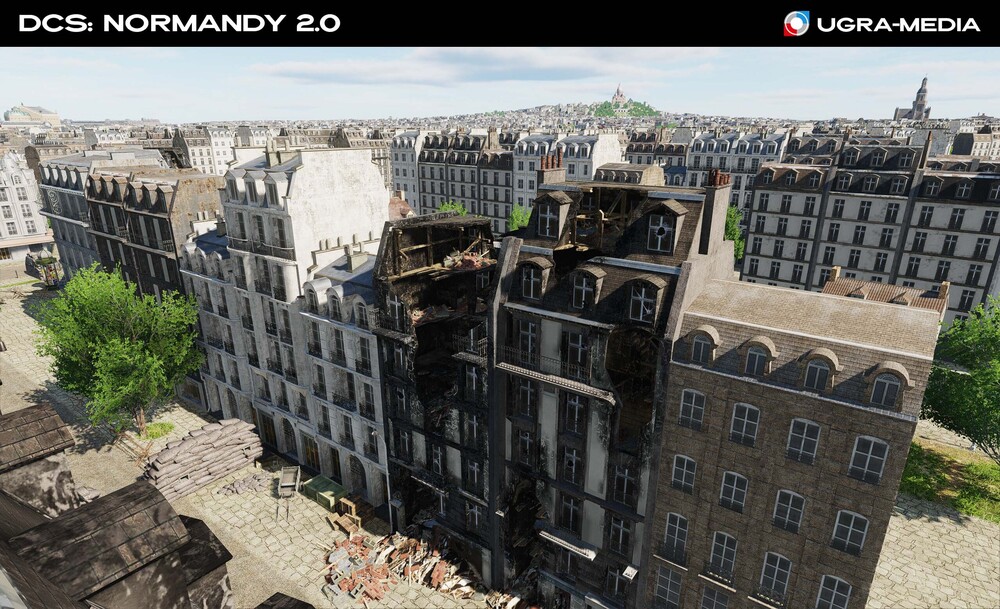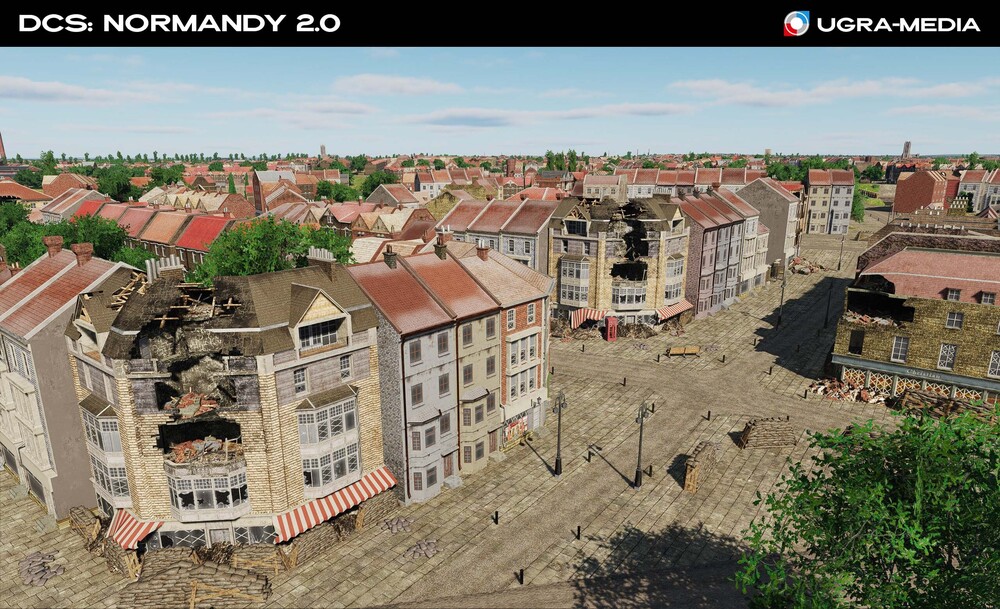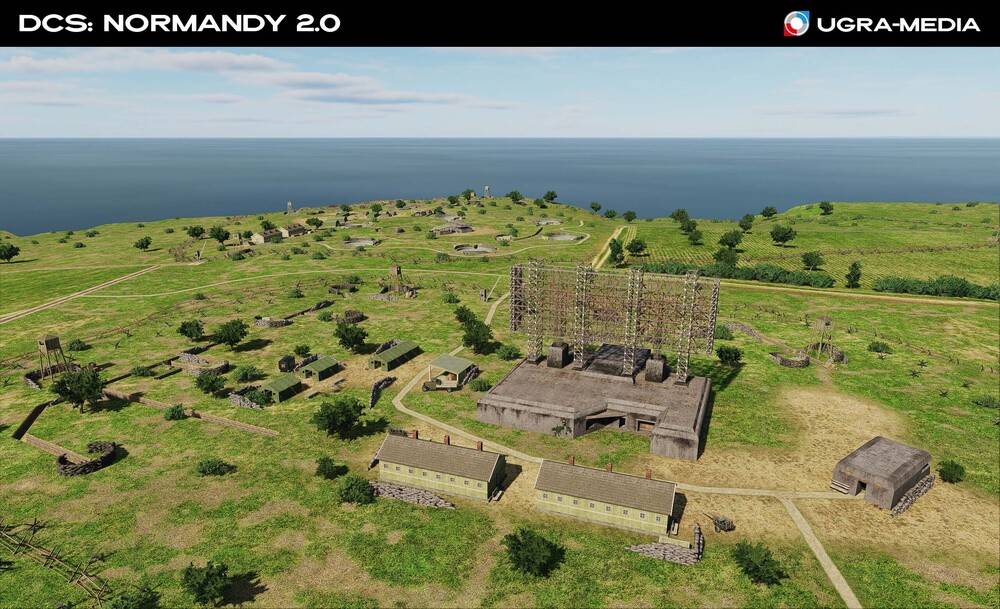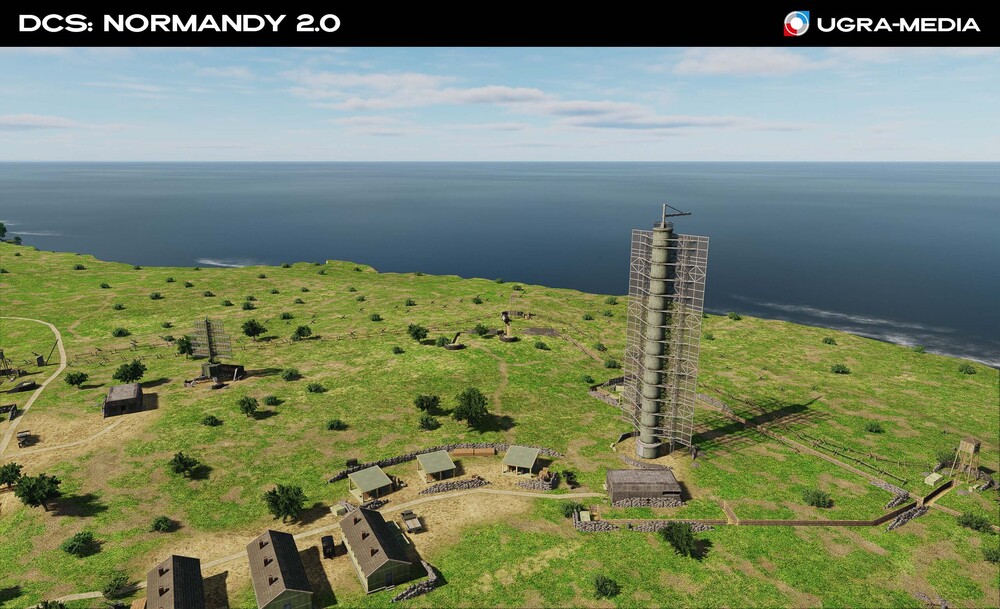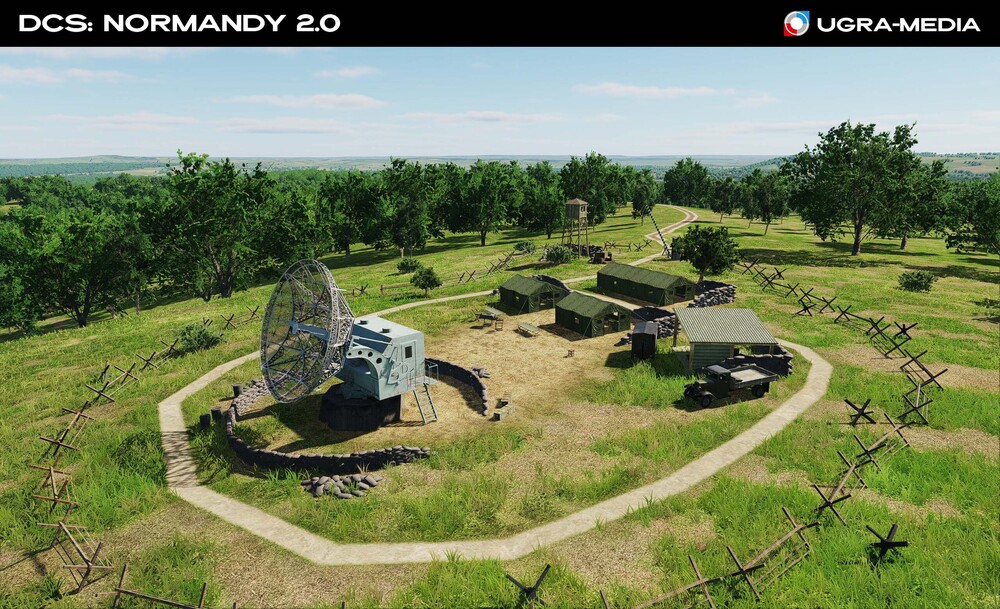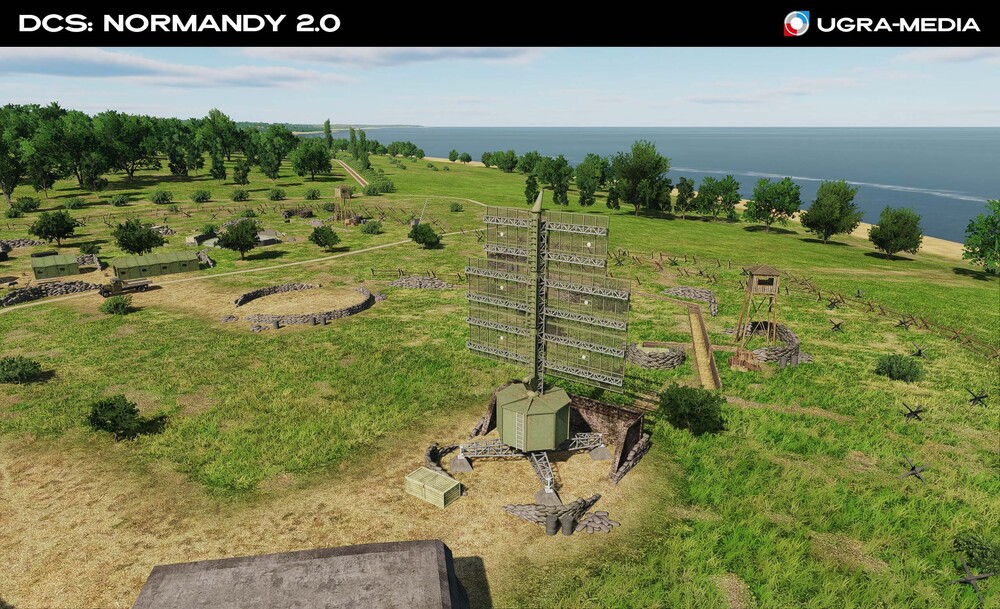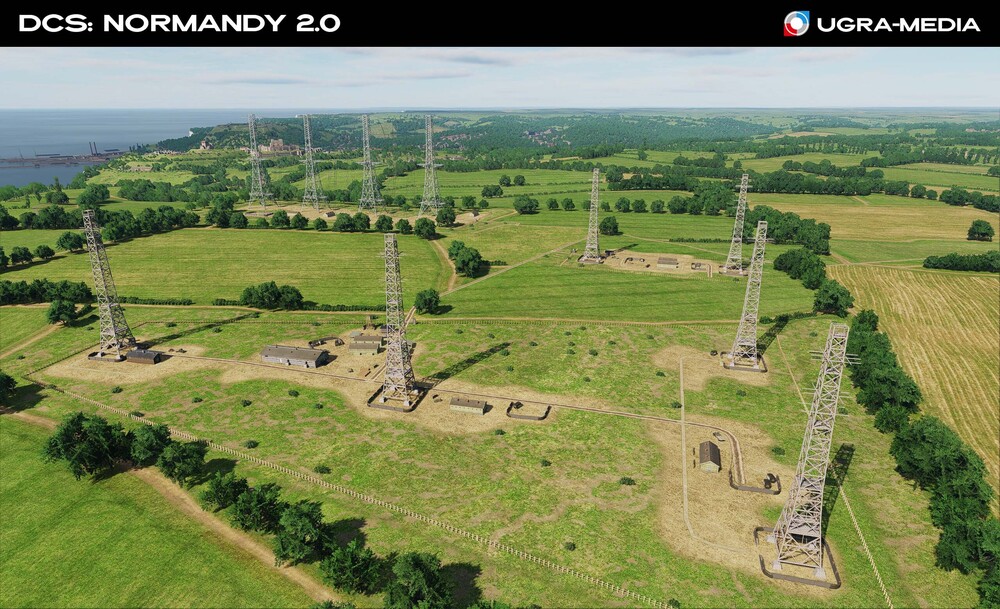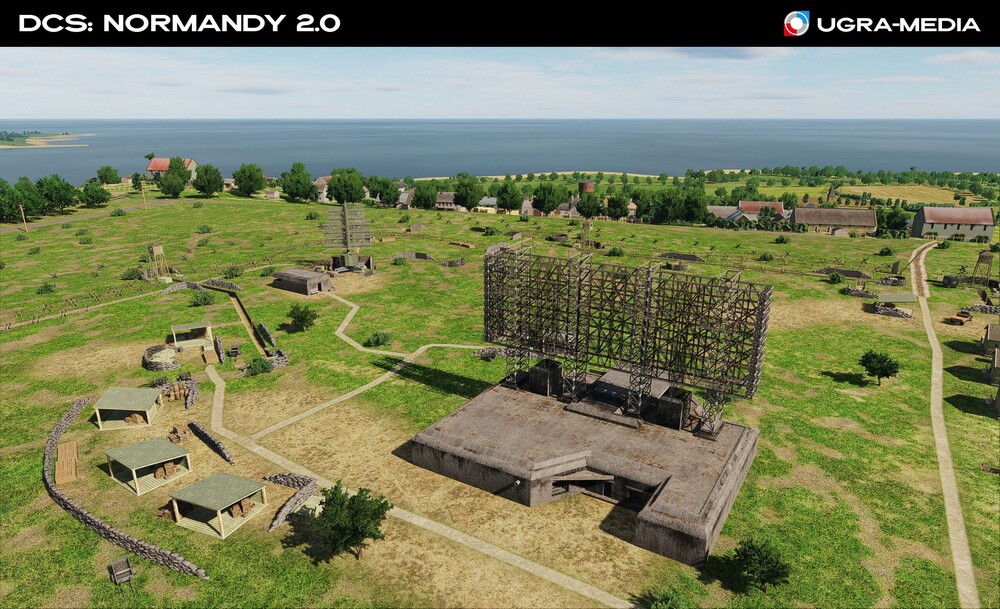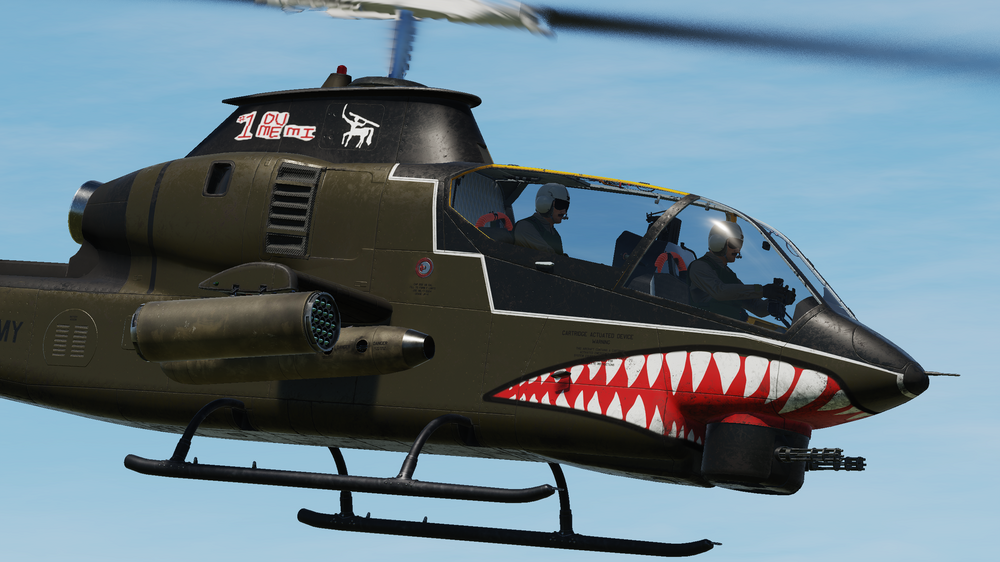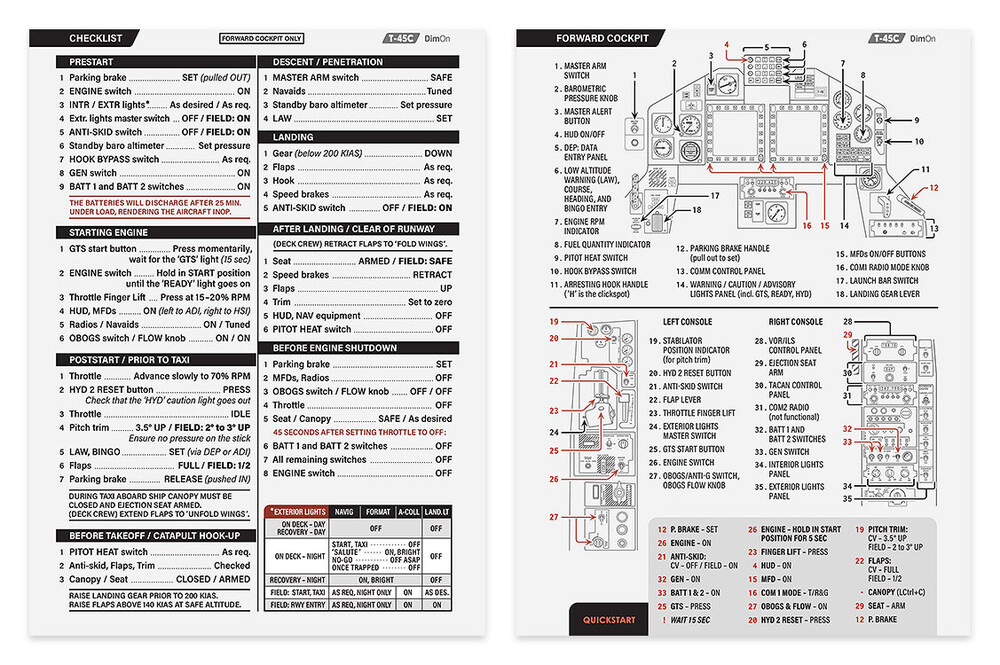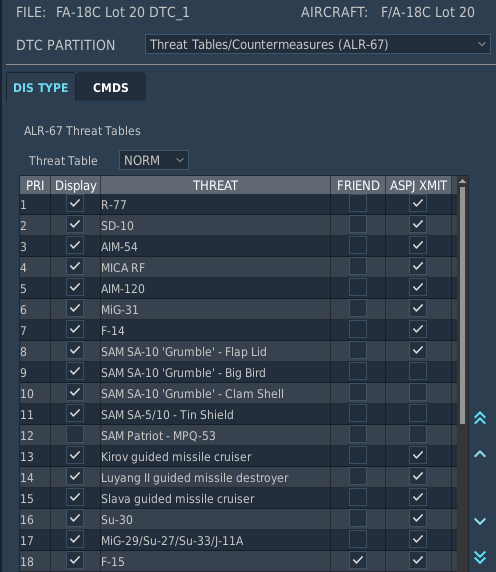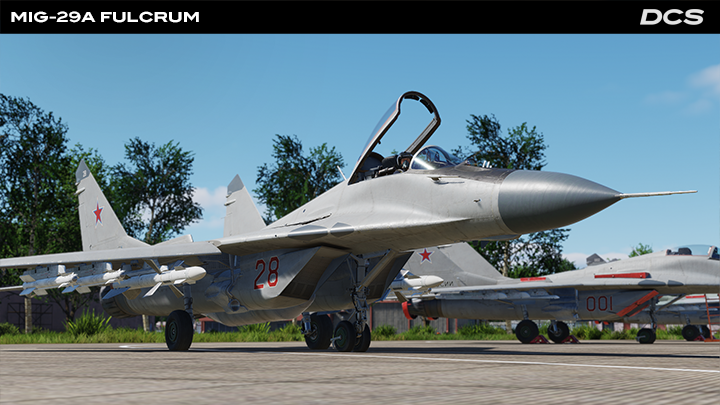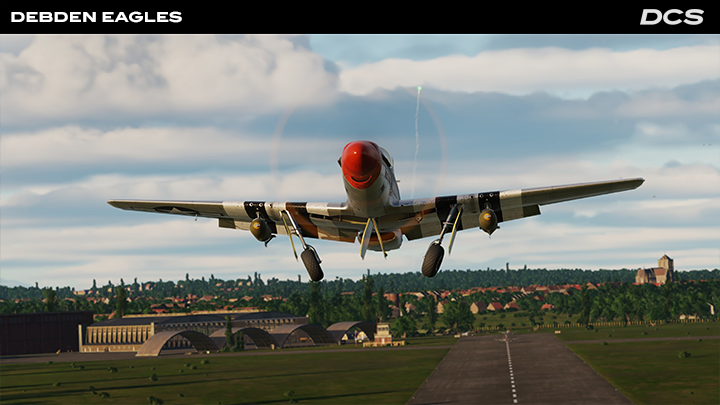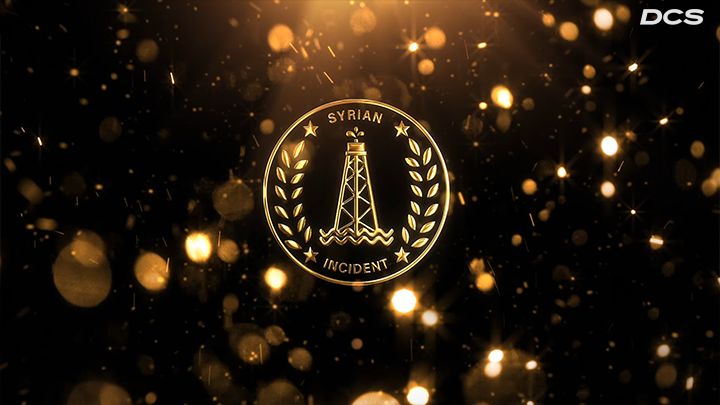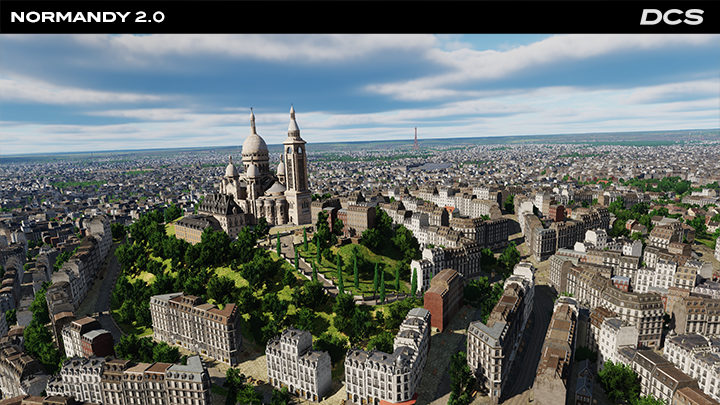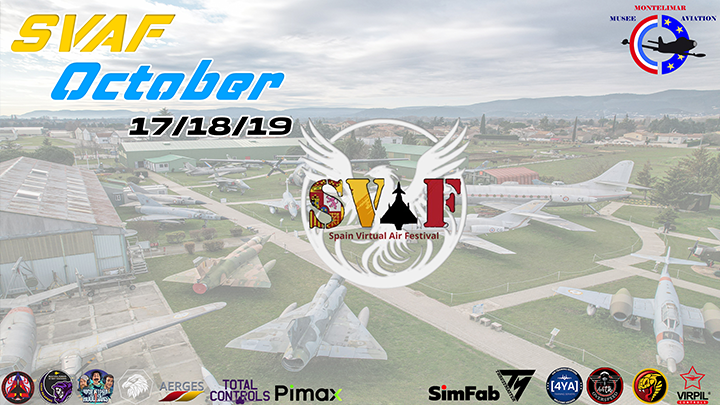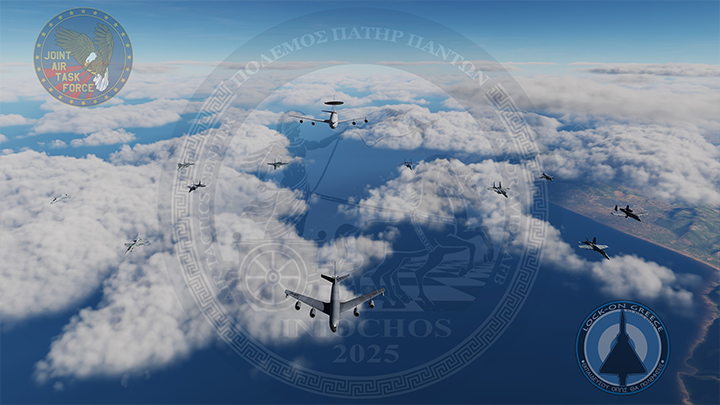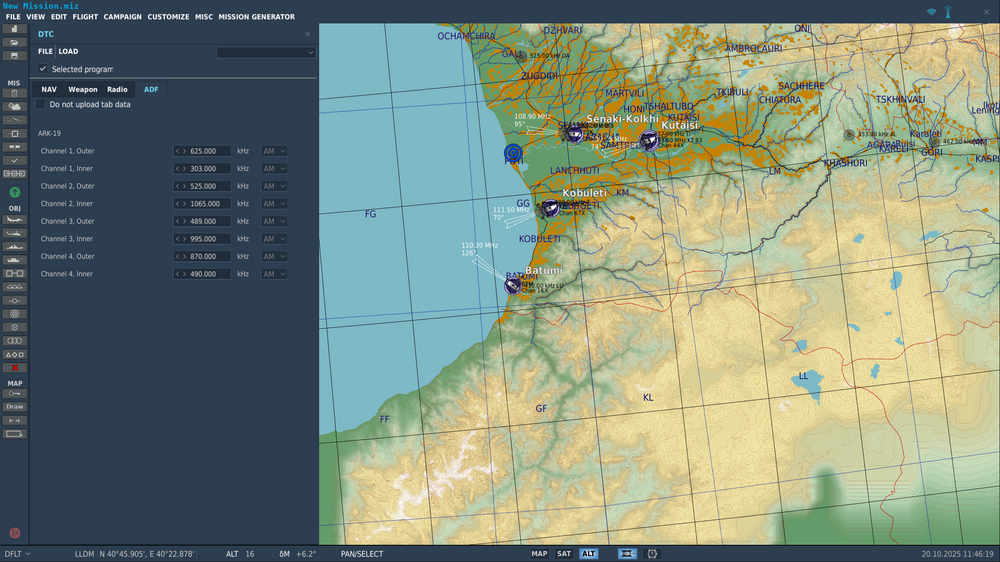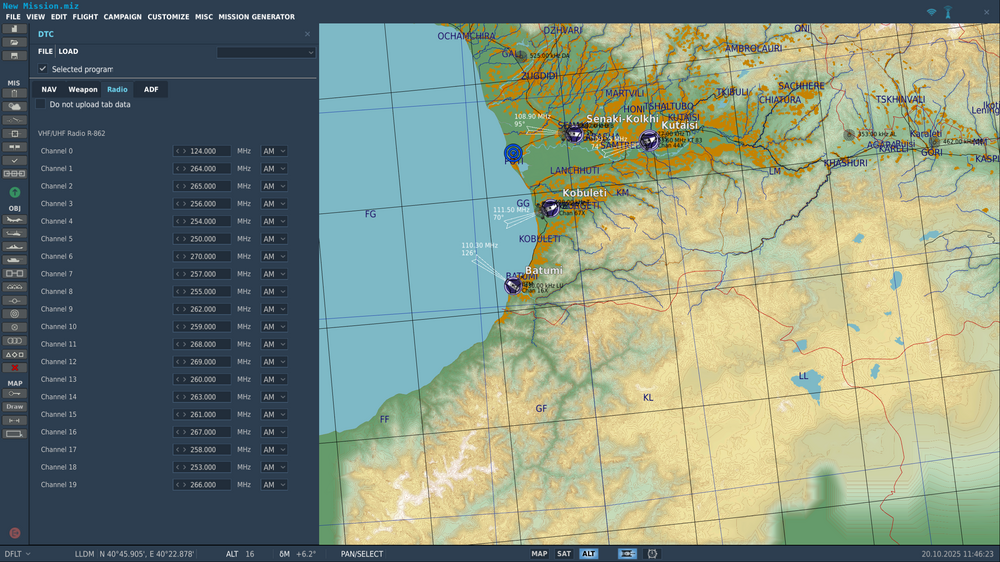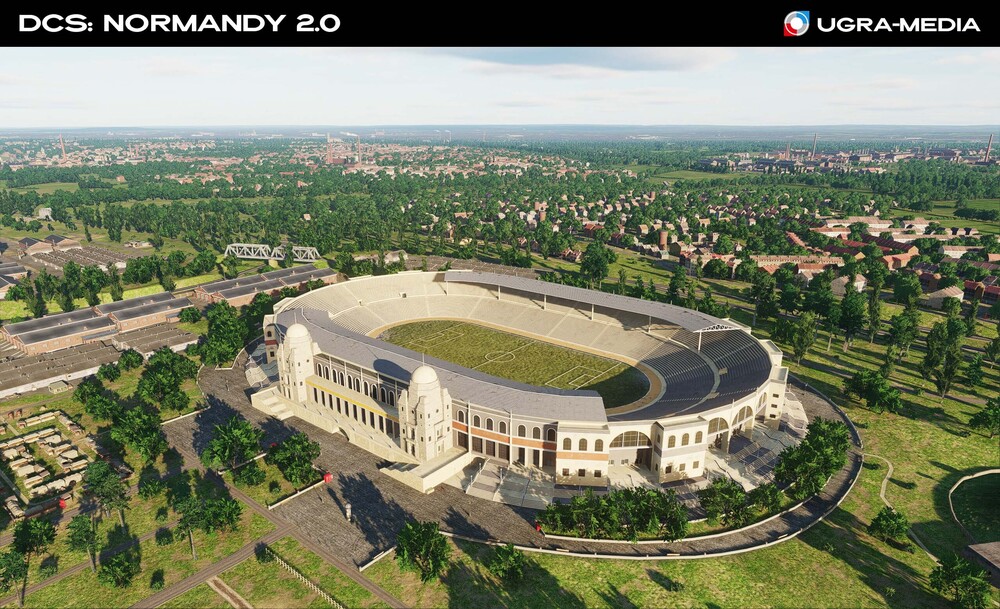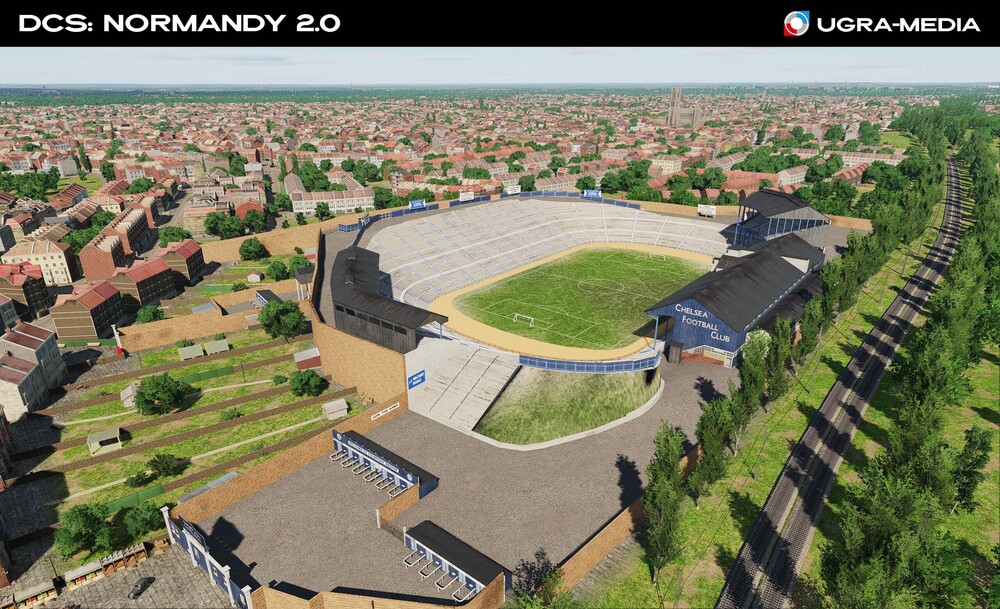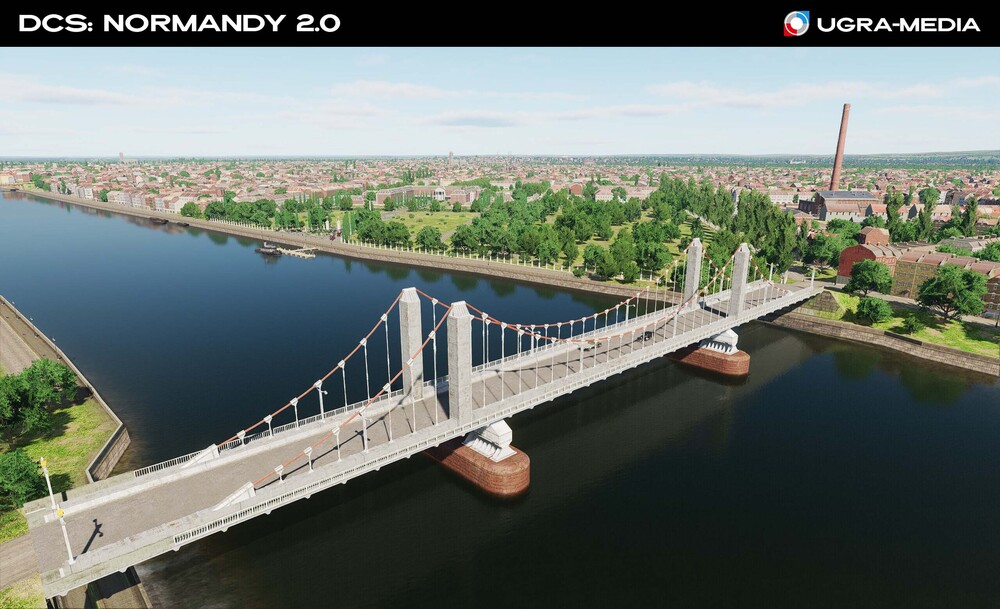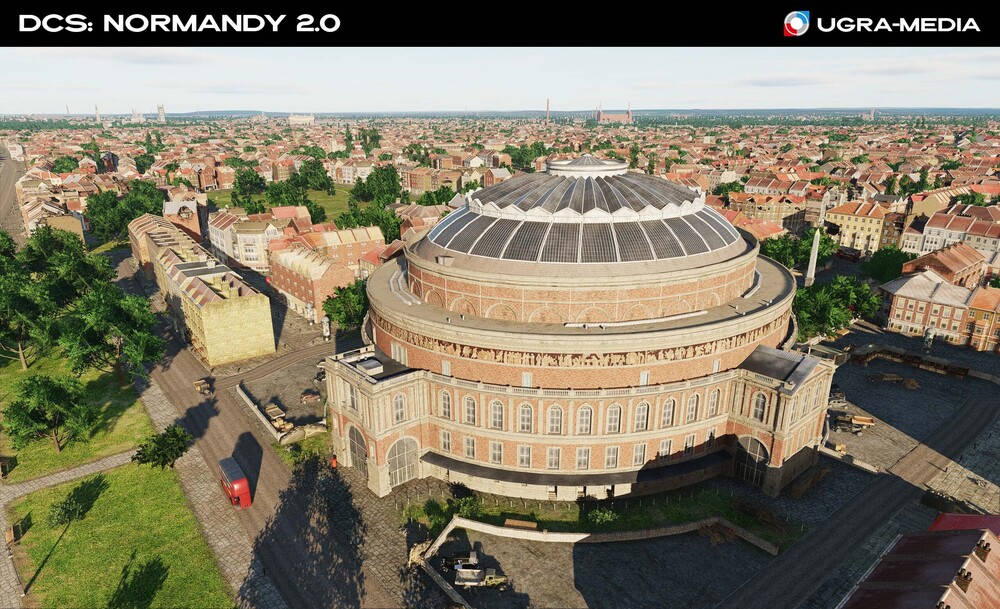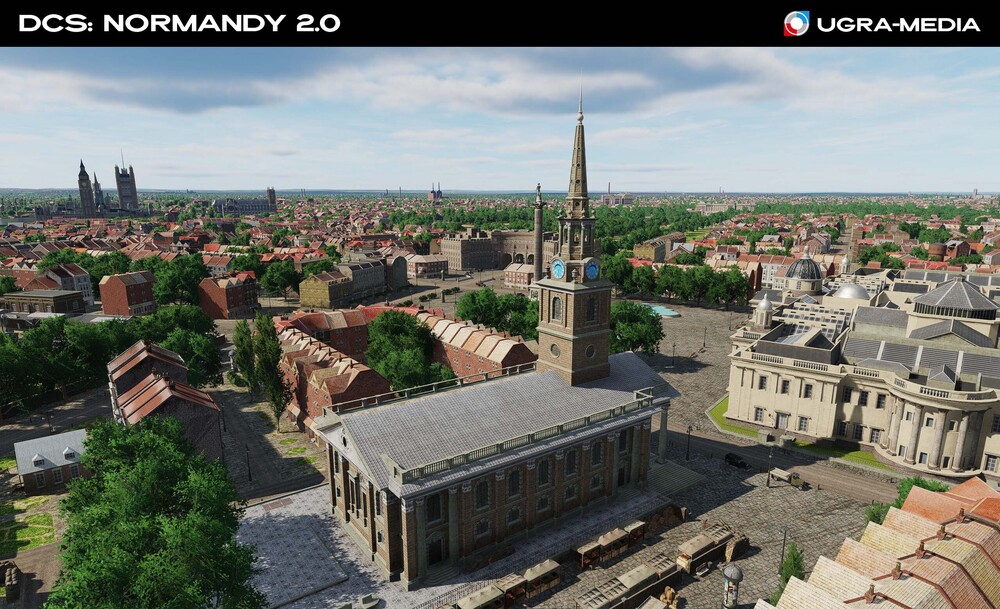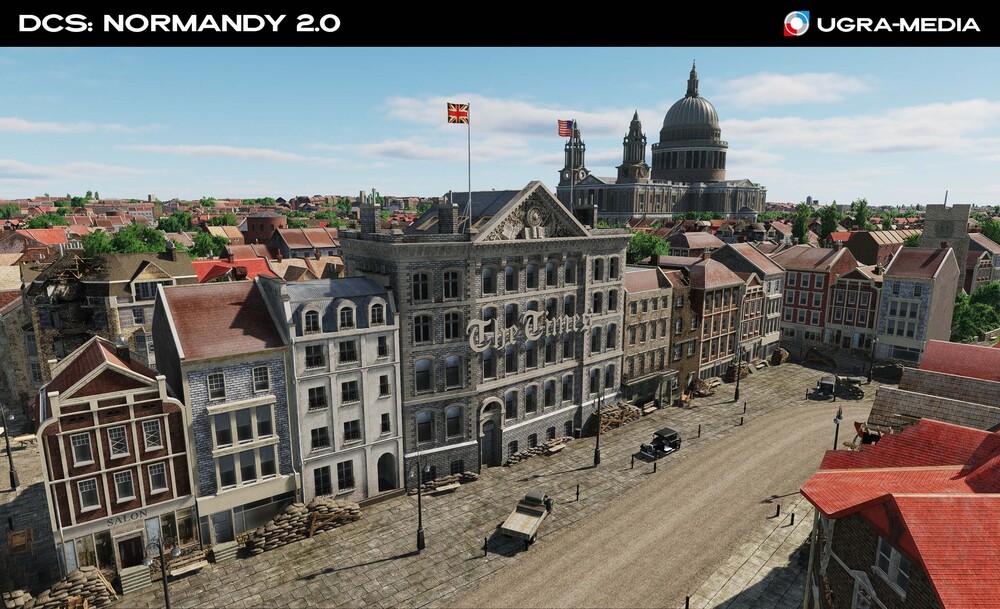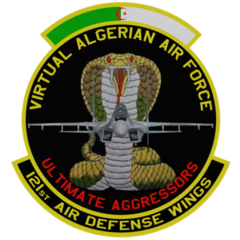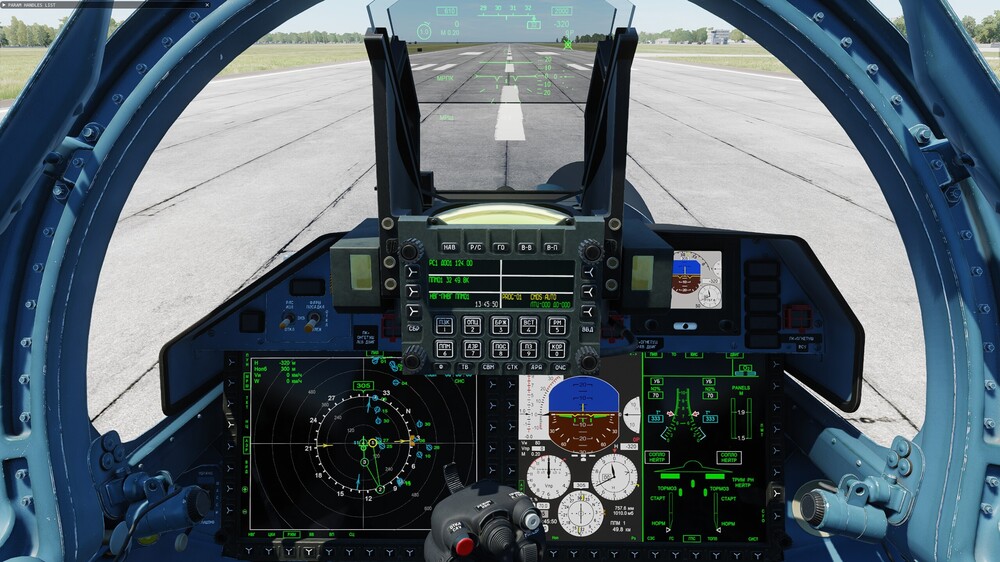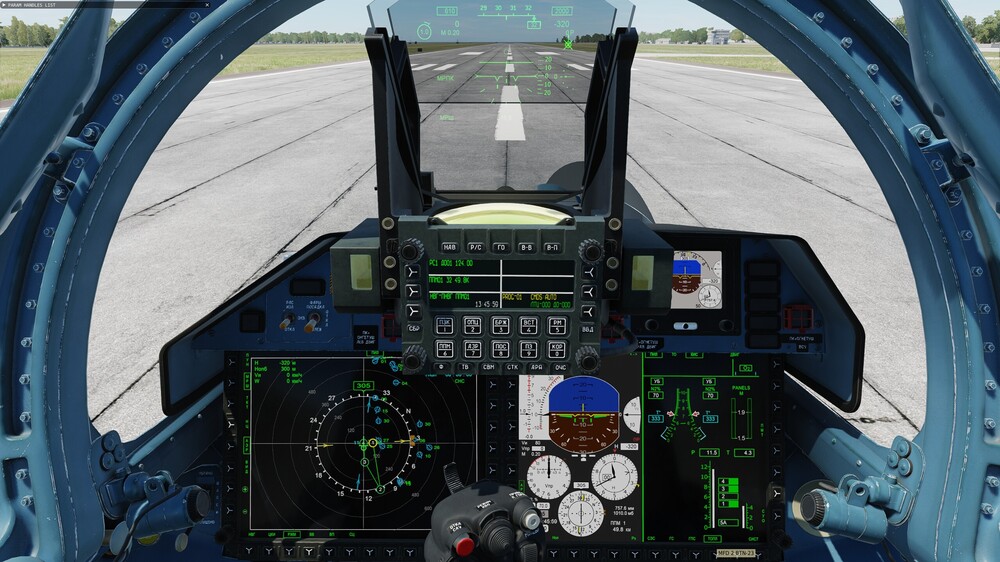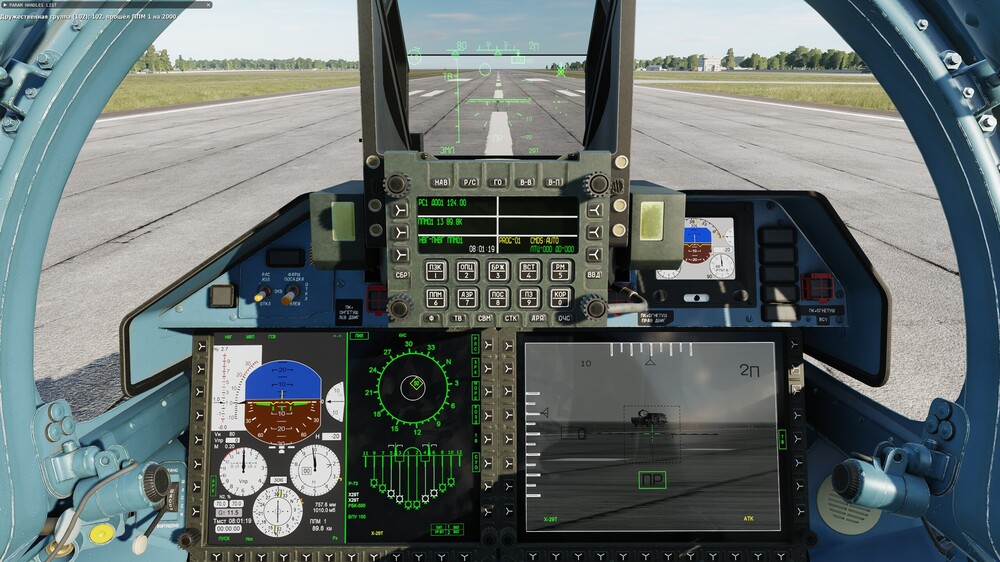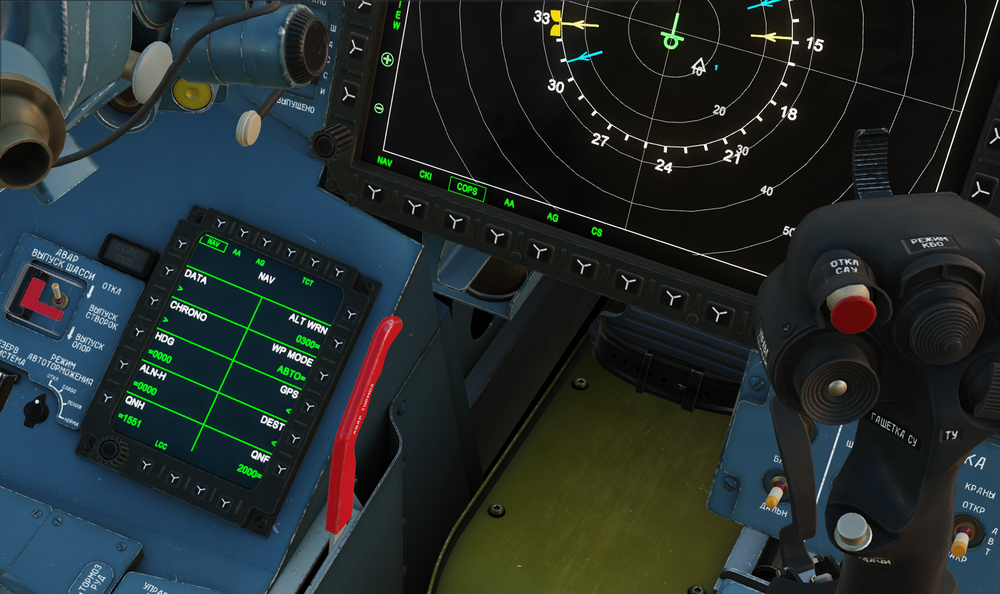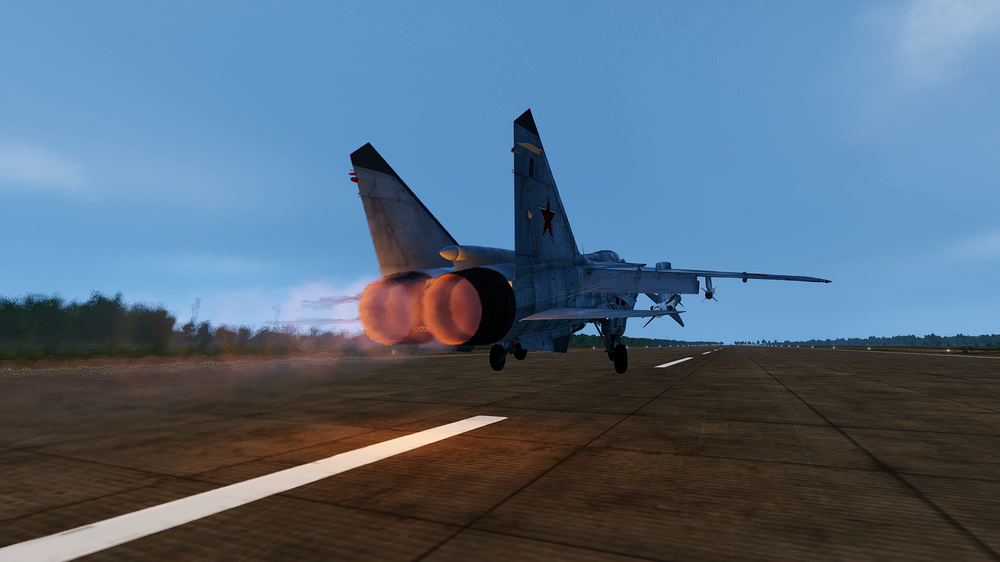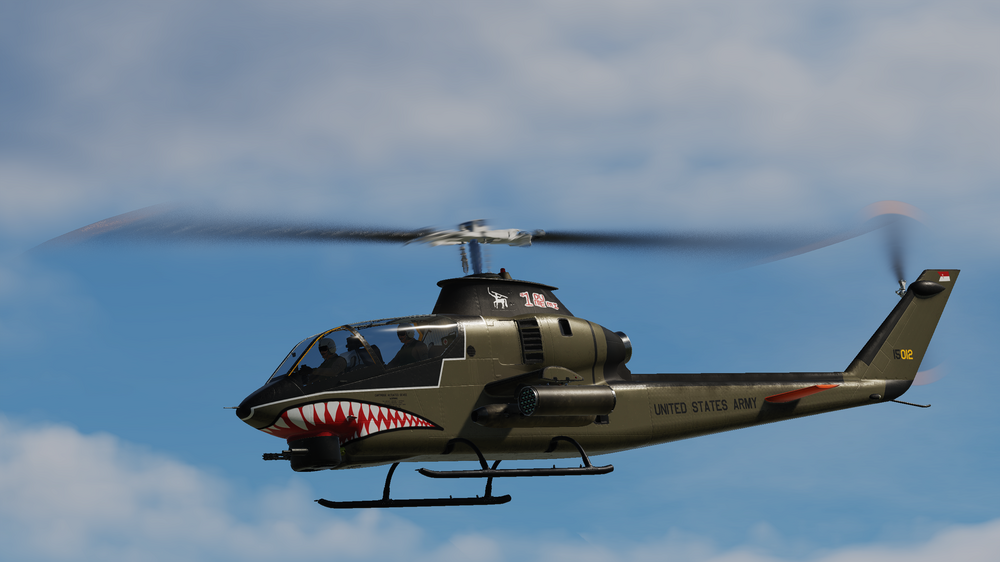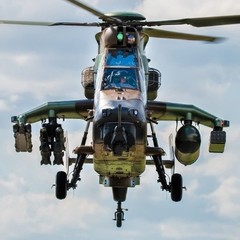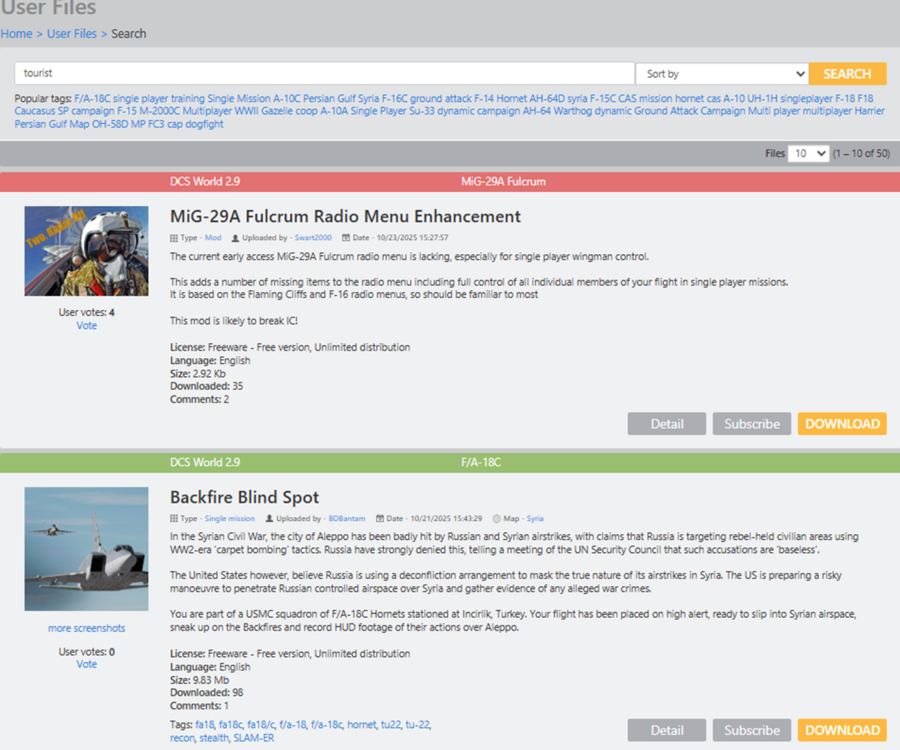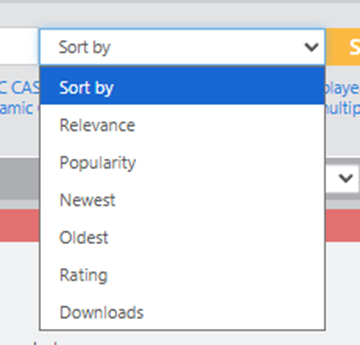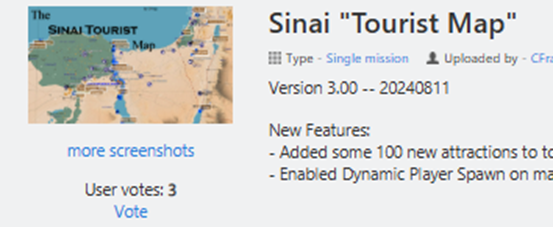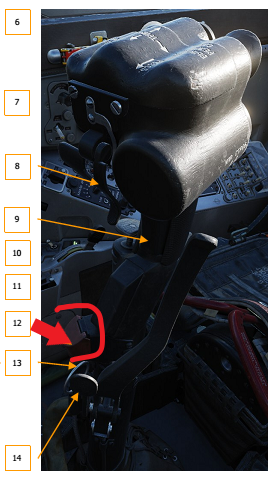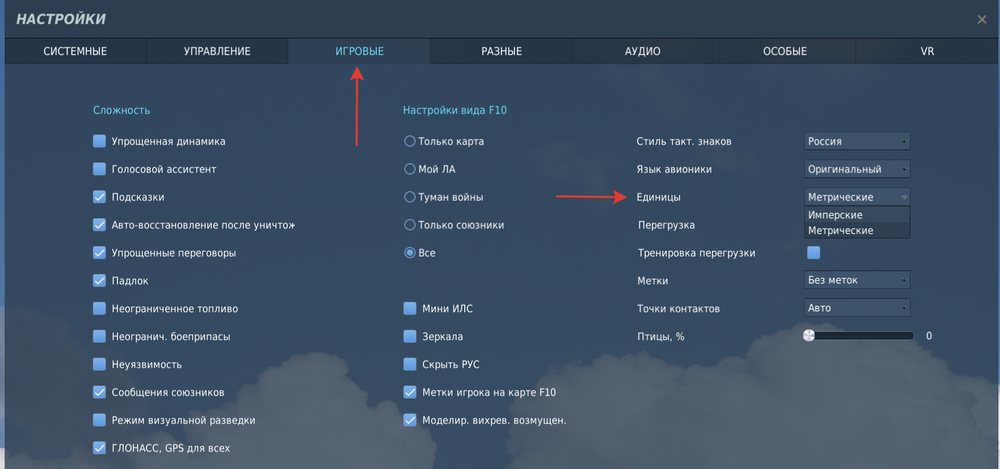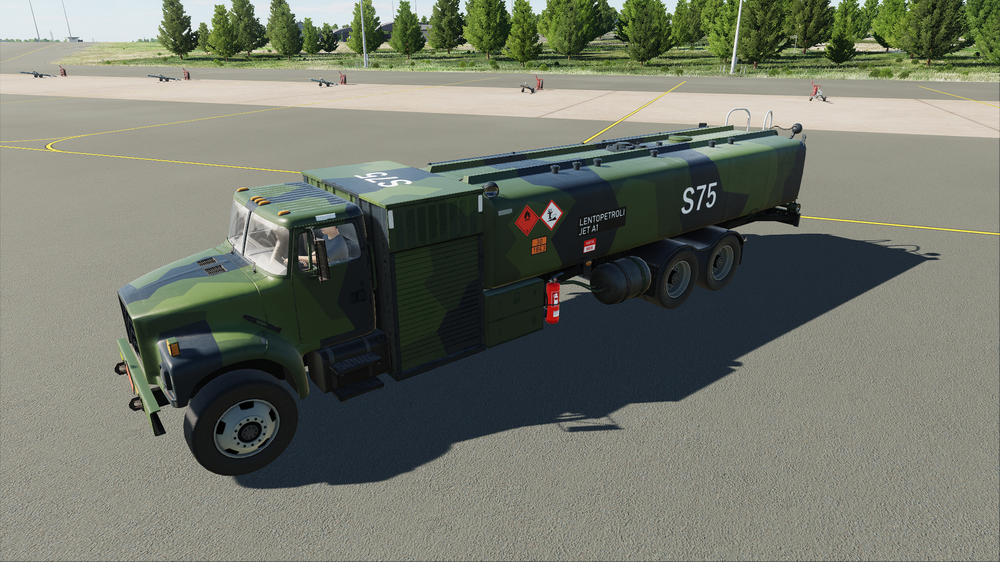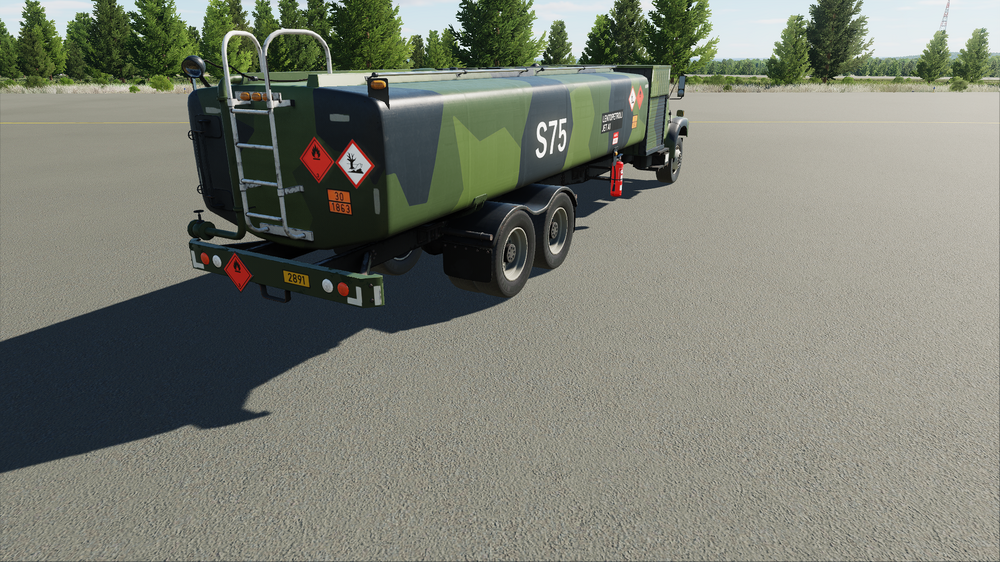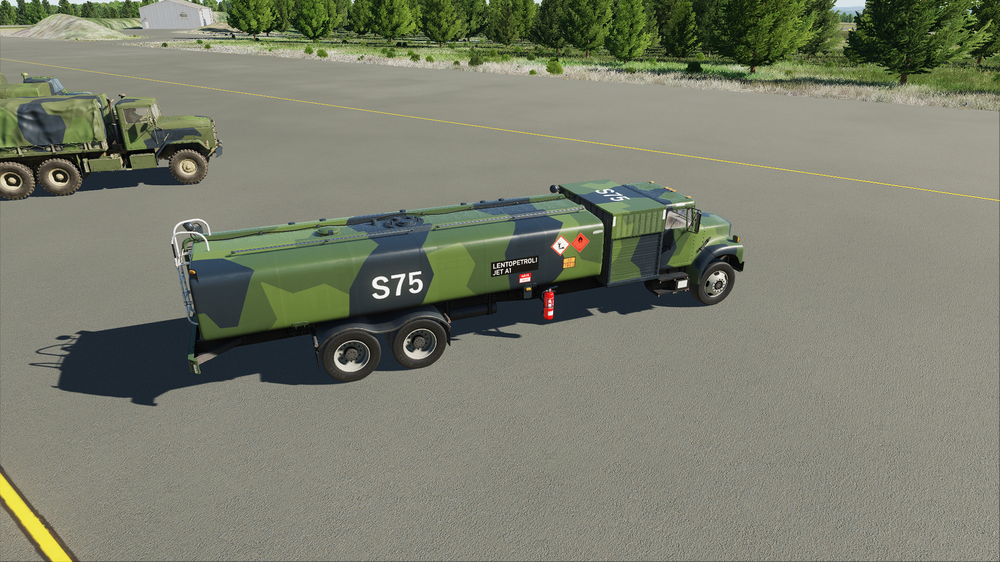Leaderboard
Popular Content
Showing content with the highest reputation since 09/29/25 in Posts
-
Hallo, ihr Jagdflieger! We're returning to the DCS: Cold War Germany map. A small but action-packed update is in the works, adding new locations, important tactical objectives, and new services to the map: During the Cold War, Bonn became the temporary capital of West Germany. We've added the city, including the famous "Bonn Pentagon" —the complex of buildings housing the Federal Ministry of Defense, a key military objective in any conflict scenario. We've also added the 72-meter-tall Stadthaus (city administration) building and the Poppelsdorf Palace. The Federal Ministry of Defense ("Bonn Pentagon") Stadthaus Poppelsdorf Palace Valentin Submarine Facility We've recreated one of the most impressive and macabre sites of the Third Reich—a gigantic concrete bunker on the banks of the Weser. It was the largest fortified U-boat facility in Germany. Most of the roof is around 4.5 meters (15 ft) thick, but part of it is 7 meters (23 ft) thick. In the realities of the Cold War, this monumental complex could have served as a highly secure storage facility or a secret factory. A target of the highest priority. Rostock Port The largest port of the German Democratic Republic (GDR) on the Baltic Sea. During the Cold War, it was a key hub for Soviet and East German maritime transport, a logistics hub, and a potential base for Warsaw Pact warships and submarines. One of the key strategic targets in the update is the Ennepe Dam – a hydroelectric power station in North Rhine-Westphalia, built in the early 20th century. NATO and Warsaw Pact military doctrines considered hydraulic structures to be top-priority targets. Industrial area with waste heaps: we've added Terricones SA-2 Air Defense Zone: Consider deployment locations when planning missions. Cologne-Bonn Airport (Terminal): A major hub ready to receive your aircraft. Autobahn Runway: Using sections of highway as runways is a legendary practice. New opportunities for you. Flights to such runways require pilots with precision takeoff and landing skills. Stay tuned, we'll show you and tell you more about the upcoming update. Don't forget to get your new certification!48 points
-
In the next DCS update, George AI Pilot will be receiving some improvements to his existing logic and behavior in an effort to make him more realistic along with several new features to make him more capable. The most noticeable change is the addition of an AI Helper Interface wheel that functions in a similar manner as what is seen when controlling the AI CPG, which will help players understand which commands are available at any given time. The second change is the addition of a new command to the AH-64D CPG controls called "Multifunctional Input (Center)", which functions similarly to the Consent To Fire command for the AI CPG in that it corresponds with the actions displayed within the center of the AI Helper Interface wheel. Accordingly, the Consent To Fire command in the AH-64D Pilot controls has been renamed to "Multifunctional Input (Center)" to more accurately represent the evolution of this command following the changes to George AI CPG in the July 23rd update to DCS. In the graphic below, the new AI Helper Interface is shown for when the player is in the CPG seat, with some new commands identified when the interface is in Flight (FLT) mode. The player can now toggle the AI Pilot's speed reference between ground speed (GS) and true airspeed (TAS) with a short press (<0.5 seconds) of the Multifunctional Input command; or toggle the AI Pilot's altitude reference between radar altitude (R) and barometric altitude (B) with a long press (>0.5 seconds) of the Multifunctional Input command. One additional change that is worth noting is that the Right-Short commands have been swapped between Combat (CMBT) and Flight (FLT) modes to improve the workflow when using the AI. Now, when the AI Interface is set to FLT mode, Right-Short will command George to navigate the current route; and when the AI Interface is set to CMBT mode, Right-Short will command George to turn to where the player is looking. New Speed Settings & Altitude Conversions When set to FLT mode, the player will have additional speed options, which can be particularly useful when trying to creep along the terrain at NOE altitudes or when trying to synchronize a planned time-on-target. These speed options will now include 20, 40, 60, 75, 90, 100, 110, 120, and MAX, with the new speed options underlined. When toggling the altitude reference between radar and barometric, George will now perform a correct conversion between the AGL and MSL equivalent altitudes based on the elevation of the terrain below the helicopter. This will aid in a more natural switch between altitude references. Ground Operations George can now be commanded to perform start-up and shutdown procedures by accessing the new Ground (GND) mode of the AI Interface any time the helicopter is landed. FULL START - George will perform a full start-up procedure from turning on the battery to preparing the helicopter for takeoff. ENG FLY - George will initialize all systems, start the engines, and bring the Power levers to FLY, but will leave the APU on and wheel brakes applied until the player commands him to turn off the APU and release the brakes. Alternatively, this may also be used to command him to start the APU and apply the wheel brakes after landing. ENG IDLE - George will initialize all systems and start the engines, but will leave the Power levers at IDLE until the player commands him to bring the Power levers to FLY and/or prepare the helicopter for takeoff. Alternatively, this may also be used to command him to start the APU, apply the wheel brakes, and bring Power levers to IDLE after landing. APU ONLY - George will start the APU and initialize all systems and announce when he is ready to start engines. Alternatively, this may be used to command him to start the APU, apply the wheel brakes, and shut down the engines after landing but keep all systems initialized with the APU on. SHUTDOWN - George will perform a full shutdown procedure, to include shutting down the engines, powering down systems, turning off exterior lighting and the APU, and switching off the battery. CMWS ON/OFF - George will toggle the CMWS power on/off. When CMWS is on, he'll set the CMWS/NAV switch to CMWS for combat operations. When CMWS is off, he'll set the CMWS/NAV switch to NAV for non-tactical flights. Defense Settings In order to provide a more efficient workflow during missions, the CMWS mode has been removed from the typical AI Interface flow of FLT -> H-B -> CMBT and can only be accessed using a long press (>0.5 seconds) of the George AI - Show/Hide command. In addition, a new command for commanding George to configure the exterior lighting has been added, and the mode itself has been renamed to Defense (DEFN). The following exterior lighting configurations can be selected using the Right-Short AI Helper command. DAY - Day, non-combat operations. Anti-collision lights set to WHT. NT BRT - Night, non-combat operations. Anti-collision lights set to RED and navigation lights set to BRT. NT DIM - Night training missions. Anti-collision lights set to OFF, navigation lights set to DIM, and formation lights set to BRT. NT FORM - Night training/combat missions. All lights off except for formation lights. LTS OFF - Night training/combat missions. All lights off. Improved Flight Logic George's overall flight logic has been improved, most notably to avoid exceeding the engine or drive train limitations or ensuring the helicopter has sufficient power for what the player is asking George to do. George will use the PERF page calculations to properly assess the power margins and will now provide verbal feedback to the player if he is asked to adhere to airspeed or altitude parameters that exceed the acceptable power margins for the current gross weight, altitude, and temperature. In addition, he will automatically switch between "nose-to-tail trim" at low speeds and "aerodynamic trim" at high speeds. NOTE: Although George's flight logic has been improved, it is still possible to force him into a situation in which he may collide with terrain or obstacles, particularly when he is being ordered to adhere to extremely low altitudes, operate with a high gross weight and narrow power margins, or fly at MAX speed (or a combination of these factors), the player should use prudence when selecting the airspeed and altitude combinations, and occasionally cross-check his flight path just as a real crewmember will typically do. As an example, if the helicopter does not have sufficient power margin to clear a ridgeline, the player can order George to slow to 75 or 60 knots TAS to improve his climb rate or climb angle. But if that is not sufficient, the player should order George to alter heading to avoid the rising terrain. When the AI Interface is set to Combat (CMBT) mode and the player presses the Up-Short command, George will perform the following contextual behavior. ALIGN TO TADS - George will align the nose towards the azimuth of the TADS sensor. ALIGN TO NTS - George will align the nose towards the FCR Next-To-Shoot (NTS) target. However, if the player's selected sight in the CPG seat is set to TADS or FCR and has actioned rockets, George will turn towards and actively maintain horizontal alignment with the Rocket Steering Cursor for 30 seconds, permitting the player to engage moving targets with rockets or make subsequent aiming adjustments. An updated George AI chapter describing the improvements to George AI Pilot will be included in a future edition of the DCS AH-64D Early Access Guide, but will not be finished in time for the upcoming update. We hope that these new features to George AI Pilot will allow players to utilize the front gunner seat more effectively across more phases of each mission while improving the player's reliance on George's piloting abilities.43 points
-
https://www.digitalcombatsimulator.com/en/news/changelog/release/2.9.21.16362/ NEW: Added F-14A-135-GR (Early) variant DCS Core AI (Ground, Air, Sea) AI aircraft. F-16 won't attack head-on targets with missiles in certain cases - fixed. AI aircraft. Dangerous approaches during refueling have been adjusted. AI aircraft. Corrected moving on runway and taxing in some cases. AI aircraft. AV-8B. Fixed nozzles short landing configuration used when conventional landing speed is too high, Power Break Nozzles used, overhead pattern landing added for Harriers. AI aircraft. Tu-160 is not performing air refueling - fixed. AI aircraft. F4U AI sometimes descends to 500 feet before climbing and continuing its mission - fixed. AI aircraft. New tasks added for helicopters: ‘External Cargo Load' and 'External Cargo Unload'. Old task 'Cargo Transportation (External) is removed, and the possibility to add in the mission editor has been hidden for new missions while compatibility with old missions has been retained. ‘External Cargo Load' makes HAI hook up cargo as it was in old task, but after hooking, HAI will continue its route set by the missionmaker so that it is the missionmaker’s responsibility to now limit altitudes and airspeed for such cargo delivery. ‘External Cargo Unload' is an advanced waypoint action with trigger or script. It will make HAI fly towards the cargo drop zone and unhook cargo there (if HAI have any) after calling the task. Some tuning was added to HAI control when it carries external cargo that includes yaw velocity and max AoB limitations when cargo weight is more than 10% of helicopter gross weight. It will reduce arrival and landing speed (40m/s, 77knots, 144 km/h max). (AI flies way too fast with sling load - Aircraft AI Bugs (Non-Combined Arms) - ED Forums) Dedicated Server Dedicated Server. Server CTD when client disconnects while in a ground vehicle - fixed (Server Crashes When Leaving Server While Controlling a CA Vehicle as Game Master - Game Crash - ED Forums) Dedicated server webGUI restart button causing server to start with the first mission in the list -fixed (it should launch the last mission played instead) (WebGUI Restart Server Bug - Multiplayer Bugs - ED Forums) Weapons Additional post penetration checks added for GBU-31.(https://forum.dcs.world/topic/378982-jdam-settings/) Note: for the case in forum report 180s is not a suitable setting for this kind of target. It should be set to a shorter one. R-27 missiles. Improved network sync of trajectory. Improved network sync of explosions for Air-To-Air and SAM missiles. BetAB-500 and BetAB-500ShP. Fixed excessive splash damage being dealt when these bombs exploded on runways or concrete objects/surfaces. User Interface Adjusted colouring and grouping design for the debriefing screen. Coalition join screen bug for cases when players could see units on map while choosing coalition or role, even when “Map only” is chosen for map option in mission - fixed. Dynamic spawn slots interface. Client gets a connection block after several attempts to occupy the slot. Dynamic spawn slots interface. When the main aircraft pilot in multicrew leaves the current slot, other crew members are not automatically removed from the aircraft slots - fixed. Mission Editor Added new options for warehouse resource manager interface "COPY TO" functionality Added ability to add subtitles to Radio Transmission Trigger Action. Graphics / Effects Explosive/smoke effects displayed in MFD in the cockpit have artifacts (black textures) - fixed. 3D Models Added new USSR/RF civilian trucks with various liveries: GAZ-66, KamAZ 43101, URAL 4320 (refueler ATZ-5, flatbed version and canopy version), ZIL-131 tractor unit. In the list of units they will be displayed with the mark "civil". Added new liveries for technical LC series. Features Multiplayer dynamic aircraft slots. Aircraft (usually larger aircraft) spawning in open shelter parking that are too small to contain the aircraft in question - fixed. Dynamically spawned FARPs via script/API do not appear in dynamic slots interface - fixed. Added coalition change block: this functionality allows server admins to prevent players changing coalition at any time. If Block is activated then only initial coalition choice is allowed for the player and player won't be able to change it until time specified by mission designer passes. “Release slot” action is not correctly working in track replay - fixed. Launcher Fixed. Position of checkboxes on the Files > Available page. Fixed. Error when trying to open FC2024 bundle. Fixed. Links to products’ pages in the news. Currenthill Asset Pack Fixed liveries for the T-90A, Mi-28N and T-95MS. Fixed the list of available payloads in ME for the Mi-28N and Tu-95MS. DCS: MiG-29A Fulcrum by Eagle Dynamics AFCS : Improved: Autopilot-induced oscillations. (work in progress). FCR: Fixed: Cooperation mode track range bug. Fixed: Random STT break. Fixed: Azimuth zone switch and delta H knob do not affect close combat mode anymore. Fixed: Lost track in CC mode if COOP is on. IRST: Fixed: Gun trigger guard for NAV mode. Fixed: Radar acquisition (COOP mode) in OPT and HELMET modes. Fixed: Missile acquisition in OPT and HELMET modes. Fixed: Tone and voice message in Boresight (BS) and Grid. Fixed: IRST Close Combat (CC) and FCR CC formats. Fixed: Wrong segmented HMD indication. Weapons: Added Training mode for bomb, rocket and gun (can choose in DTС (see the description in the game manual). Fixed: Missile launch in BS mode. Fixed: Missile emergency launch is restricted on ground. Fixed: NOLA indication freezed. Fixed: KMGU unloading. Fixed: Corrected self altitude based on the laser range. SPO-15: Fixed: Database update: changed condition for CW illumination for F-4 to illuminate for all AIM-7 variants. Fixed: wrong elevation volume when a submode changes bar pattern, was causing extremely faint signals in those cases from AI radars in search mode. Adjusted formatting for occlusion remarks in kneeboard. Fixed: Damaged engines continue to spin at 80% RPM. Fixed: Test HUD color. Fixed: APU power mode (hydro source instead of apu cold crank). Fixed: Startup mode switch logic. AFCS BIT can't complete when using FFB (stick pos checking disengaged in FFB case). Editing the oxygen panel switches. Fixed: HUD/HDD start up. (The HUD/HDD display should appear approximately 54 seconds after turning on NAVIGATION after a cold start. (Ground power must be present.) If none of the GYRO Man, GYRO STBY, or NAV controls are enabled, the page is displayed without the airplane, pitch and bank scales, horizon line). Fixed: Damaged INS continue to steer HUD/HDD directional ring to true north. Added sound when scrolling messages on the AEKRAN, and slightly adjusted the message format. Fixed: Missing max G-load on the AOA/G meter. Fixed: Display export needed the correct aspect. Fixed: Added Shaking the rubber band over the HDD. Fixed: Left (red) nav light stays on when the corresponding wing is cropped. Fixed: AI and static units have wrong configuration of exhaust nozzles when cold. Fixed: VR. Helmet is not drawn correctly when the "Force IPD Distance" parameter is changed. Command "Gun Trigger - toggle(FIRST DETENT/RELEASE)" has been added with categories 'Stick', 'HOTAS', 'Special'. Fixed: The angle of attack measurement range on the AOA/G meter. Fixed: Logbook not recording time in MiG-29A. Fixed: PRMG channel is set to 54 at mission start. DCS: F-16C Viper by Eagle Dynamics Added first-person view Visor effect. New units added to the NCTR database MIDS name table updated. Fixed: Significant lag in frame rate and game stutter when ATP XR entered/exited. Fixed: Point track drifts off target after switching to non-tracking camera. Fixed: HOTAS Strafe command (UNCAGE >1 sec) does not change SMS format to STRF. Fixed: VR. Helmet is not drawn correctly when the "Force IPD Distance" parameter is changed. Fixed: ATP A-A TGP moves off track erratically at start of tracking. Fixed: MFD format selection issues. DCS: F/A-18C Hornet by Eagle Dynamics Added first-person view Visor effect. Fixed: JDAM/JSOW: QTY reset if another weapon is selected. Fixed: VR. Helmet is not drawn correctly when the "Force IPD Distance" parameter is changed. Fixed: RWR Friendly "NO ID" option not working in SA page. DCS: AH-64D by Eagle Dynamics Added "Multifunctional Input (Center)" to AH-64D CPG Controls. Renamed the "Consent To Fire" command in AH-64D Pilot Controls to "Multifunctional Input (Center)" to more accurately describe AI CPG functions added to this command in the DCS update on July 23. Added AI Subtitles checkbox in AH-64D Special tab options to selectively disable George subtitles during gameplay. NOTE: If DCS subtitles are disabled entirely in the Misc tab options, the AI Subtitles option in the Special tab will be overridden and the George AI subtitles will also be disabled. Fixed: George speech volume adheres to the intercom volume as set by MASTER knob on the COMM panel. Rotating the MASTER knob fully left (counter-clockwise) will mute George and disable his subtitles. Improved AI Pilot user interface. Added AI Helper Interface for viewing available AI Pilot commands. Renamed CMWS mode to DEFN (Defense) and is only accessible with long press (>0.5s) of the George AI - Show/Hide command to improve workflow between FLT, H-B, and CMBT. Improved AI Pilot logic Added new speed settings. Added Multifunctional Input command for toggling between using ground speed (GS) or true airspeed (TAS) as assigned speed reference. 0 knots (hover) can only be set to GS. Added more speed options for realistic maneuvers, tactics, or time-on-target arrivals. Speed options now include 0, 20, 40, 60, 75, 90, 100, 110, 120, and MAX. Added new altitude settings. Added Multifunctional Input command for toggling between using radar altimeter or barometric altimeter as assigned altitude reference. Improved switching logic between altitude references when operating over terrain with high elevations. Added: GND (Ground) interface mode. Includes commands for start-up and shutdown procedures, to include intermediate stages of readiness. Added: Exterior lighting settings in DEFN mode. Includes multiple exterior lighting configurations, including black out for combat conditions. Fixed: TSD PAN to POINT> does not work if no points are visible on TSD. Fixed: Some MPD button states do not affect other MPD on the BAM page. Fixed: RF missile target data erroneously retained when sight is changed. Known Issue: Switching George AI Pilot’s altitude reference between radar and barometric when hovering at an altitude of 20 feet or less over the surface can cause a conversion error that will force George to land and may not be able to switch back to radar altitude. This has been fixed internally. DCS: Mi-24P Hind by Eagle Dynamics Tuned Petrovich AI target search algorithm for the cases when targets are located within the clutter of many different objects. (Petrovich cannot see units that are in plain view - Bugs and Problems - ED Forums) (Line of sight bug in syria - Bugs and Problems - ED Forums) Petrovich AI can’t hit amphibious vehicles with ATGM while they are in the water - fixed (can not hit amphibious vehicles in the water with missile - Bugs and Problems - ED Forums) DCS: Data Transfer Cartridge (DTC) by Eagle Dynamics Added F-16 and F/A-18 Reprogramming RWR threat tables: F-16 RWR reprogrammed on RWR tab within “Threat Tables (ELINT)” DTC partition. Reorder threat priorities for HIGH ALT and LOW ALT threat tables. Select which radar types are programmed within the RWR database and assign radar types to only be displayed when enabling SEARCH or UNKNOWN buttons. F/A-18 RWR reprogrammed on DIS TYPE tab within “Threat Tables/Countermeasures (ALR-67)” DTC partition. Reorder threat priorities for NORM, AI, AAA, UNK, and FRND threat tables. Select which radar types are programmed within the RWR database, designate radar types as FRIEND, and assign ASPJ to only jam specific radar types. Delete SPO-15 threat program choosing from DTC. Fixed: Airfield RW direction is always zero if there are L/R RW types. Fixed: GUI Error when trying to change runway in Airdromes tab in some cases. Fixed: GUI Error when Import\Load DTC after using Route Point Arrows. Fixed: MiG-29A Data from Program 1 tab is displayed in Program2 tab in some cases. Auto choosing aircraft type (If there is aircraft with skill "player", need to choose this type automatically on "New" window). MiG-29A: Added airdromes sorting in the drop-down menu. Fixed: Keystrokes during exporting DTC file picked up in cockpit. DCS: CH-47F by Eagle Dynamics Fixed. Incorrect input via scratchpad on the REF SELECT page. Fixed. Can’t change VOR/ILS frequency via Presets page. Fixed. Back ramp visibility when the machinegun is installed. Fixed. LEFT_MFCS viewport not visible. Added. Unique cockpit noises for VOIP background. Improved. Controls indicator now has information: stick trim pedals trim throttles ground detent DCS: NS430 by Eagle Dynamics Fixed. It is impossible to turn off the 3D model in the MiG-29A cockpit. Fixed. The last page stays visible after powered off the device. DCS: F-4E Phantom II by Heatblur Simulations NEW: Added the DCS F-4E Phantom II Guide by Chuck Owl to Docs (Mods/aircraft/F-4E/Doc) and to the Virtual Browser. NEW: Added Electronic Flight Bag (EFB), providing insight into various aircraft systems. Access via RCTRL+I or the clickable document holder on the pilot’s left sidewall. (WIP) Fuel System page. Electric System page. Engine page. Mission Editor option: “Allow use of EFB”. NEW: Added Persistent Aircraft system: allows saving and loading the same aircraft—including its properties, wear, tear, and condition—across missions or campaigns. The aircraft state is automatically saved when successfully left on the ground. Enabled via either the Mission Editor or Special Option. If enabled through Special Option, press the “Initialize Persistent Aircraft State” keybind in-game to initialize aircraft state saving (LCTRL+P). Aircraft is tracked by its livery and tail number. Optionally, a Persistent Aircraft Key can be set in the Mission Editor to enforce specific airframe continuity across missions (useful for campaign builders). Mission Editor persistence settings override user Special Options. NEW: Added QF-4E aerial target drone AI unit with dedicated livery. NEW: Added (partial) Display/Screen Export (see manual for details). Systems: Wear and Quality improvements: Flight instruments now exhibit degraded behavior when of low quality or worn (e.g. reduced accuracy, sluggish needle response, increased friction). Implemented random failures based on each component’s Mean Time Between Failure (MTBF) and current aircraft condition. Aircraft wear now negatively affects aerodynamic and engine performance. Systems: Fixed pilot glareshield bending in the wrong direction while rolling. Systems: Adjusted cockpit pressure regulator efficiency. Systems: Corrected power sources for Landing, Anti-Collision, and Fuselage lights. Systems: Added Combat Tree (AN/APX-80A IFF Interrogator System). Added “Combat-Tree Spoofable” Mission Editor option. (NEW) Weapons: TV-guided weapons improvements Weapons: Fixed broken seeker on CATM (training Sidewinder). Weapons: Fixed CAGE+TV and CAGE+ARM preventing A/A weapons use. Weapons: Added Zuni Rockets (by DSPlayer). (NEW) Weapons: Fixed missing appearance options for AIM-9 (by DSPlayer). Multicrew: Fixed WSO throttle animation sync. Kneeboard: Improvements to Turnpoints page Sound: Fixed conflicting speedbrake sound bug. RWR: Added handoff diamond manual switching. RWR: Updated database (also including units from Currenthill). RWR: Updated handoff sounds. RWR: Added RWR utility site to Virtual Browser (by DSPlayer). JESTER: Added the “Jester UI Animation Speed” Special Option. (NEW) JESTER: Fixed “lost cabin pressure” call triggering too frequently. JESTER: Added an "Own Markers" subcategory to the Navigation Map Markers menu. JESTER: Jester now uses the AN/APX-80A IFF Interrogator combat tree. Added new IFF Jester menu entries. (NEW) JESTER: Improved prioritization of CMS dispensing. JESTER: Fixed countermeasures quantity readout. JESTER: Fixed Jester keeping flares off after temporarily disabling them. JESTER: Renamed “Talk With Me” to “Talk To Me” in the Jester menu. Missions: Adjusted WSO Startup lesson takeoff parameters to mitigate problems with autopilot engagement. Visual: New exterior model with Israeli refueling probe (visual only for now) and Greek AUP. Inputs: Fixed stuck navigation computer rollers. Inputs: Added pilot throttle outboard animation in afterburner range. Inputs: Fixed 3-position knobs remaining operable when damaged. Inputs: Default chaff burst interval set to 0.4 s. Inputs: Fixed Altimeter Mode and APX-80 Test/Challenge switch clickable and animation being reversed (for mission makers). Localization: Updated CN bind localization. DCS: F-14 Tomcat by Heatblur Simulations NEW: Added F-14A-135-GR (Early) variant NEW: Added raw radar audio to AN/ALQ-100/126 ECM Inputs: Added "Pre-Contact" and "Intent To Refuel" keybinds Inputs: Fixed some functions not being bindable to mouse RWR: Updated threats library Updated the manual DCS: OH-58D Kiowa Warrior by Polychop Simulations Fixed: Bingo Fuel warning on CPG load-in. Fixed: MMS disturbance effect removed. RWR flickering excessively. Fixed: Hellfire missiles should show codes in STBY. Fixed: CTD when using certain entries in the FIRE MSNS HOG menu. Fixed: When inputting a new frequency it will auto change the freq if it out of range instead of giving an error message. Fixed: Unable to enter FM frequency within the COMMS page. DCS: SA-342 Gazelle by Polychop Simulations Fixed: CTD when leaving the cockpit. DCS: Black Shark by Eagle Dynamics Fixed FPS drop when a Vikhr missile appears on Shkval display (https://forum.dcs.world/topic/321754-shkval-continues-to-make-fps-go-alot-lower-both-stmt/) DCS: Flaming Cliffs 2024 by Eagle Dynamics MiG-29. Autopilot-induced oscillations fixed DCS: Normandy 2.0 Map by Ugra Media A new winter season has been added. New airfields have been added New hangars have been added at Orly, Creil, Ford, Hawkinge, and West Malling airfields. New ATC towers have been added to Tangmere and West Malling airfields. An officer's canteen and an operating room have been added to Kenley Airfield. Kenley, Ford, and High Halden airfields have been changed - the airfield territory has been updated, new facilities and caponiers have been added. The old Headcorn airfield has been renamed Lashenden. Fixed taxiways at The size of parking lots at Biggin Hill, High Halden, Ford, Chailey, Conches, Needs Oar Point, Lympne, Kenley, Tangmer, West Malling, Saint-Omer Wizernes, Orly airfields have been increased. The capital hangars at Bazenville, Brucheville, Cardonville, Longues-sur-Mer, Sainte-Laurent-sur-Mer, Saint Pierre du Mont, Sommervieu airfields have been removed. New unique venues have been added 50 new scenes of German radars have been added. The islands of Jersey, Guernsey and Oderni have been added. 12 generic stadiums have been added in London, Paris, Dunkirk, Amiens, Calais, Le Havre, Lens. Added tram lines in London. Damaged buildings and structures have been added in London, Paris, Cherbourg, Caen, Le Havre, Rouen, Calais, Amiens. The terrain has been fixed and a forest has been added on the coast between Folkestone and Dover. Fixed the bridge on the north side of Ile Saint-Germain. The topography of the river north of Stony Cross has been fixed. Fixed a wall located on the road in London. Fixed a wall in Buckingham Palace. Fixed assets with incorrect transformation axis; now scene objects will be displayed correctly in some places. Fixed a tiling forest. The historically incorrect artificial reservoir Beulah Water has been removed. The grass on the concrete firing points has been removed. Surface texture resolution has been increased. DCS: Kola map by Orbx New content Updated runway number markings on Poduzhemye, Kalevala and Koshka Yavr Airfield Trees blocking taxiways at Koshka Yavr Airbase removed. Removed trees south of the runway at Kalevala. Fixed issue with planes getting stuck while turning at Kaleveala. Reduced parking slot size of I01 at Monchegorsk Airport. Removed trees blocking taxiway at parking slot C17 at Andoya. Adjusted vector data in the eastern side of Russia. Campaigns DCS: A-10C II Outpost Campaign by Stone Sky Mission 2: Removed ads for the previous Outpost AH-64D campaign. All missions. Fixed radio spam from AI Aircrafts. DCS: AH-64D Outpost Campaign by Stone Sky Mission 1: The player appeared at spot 17 instead of spot 1. Fixed. DCS: F/A-18C Operation Green Line Campaign by Badger 633 Mission 4: Wing AI crashing into ground fixed. DCS: F/A-18C: The Rampagers Campaign by Baltic Dragon Minor edits to briefings, kneeboards and dialogue Mission 15 updated to reduce risk of fratricide on friendly troops in contact Mission 16 scoring updated Missions 1, 3, 11, 12 and 14 updated GBU fuzes for player and wingmen DCS: F/A-18C Operation Mountain Breeze Campaign by Sandman Simulations All missions: Flight lead flight behavior smoothened by restricting AB use All missions: Tuning correct frequency is recognized automatically Mission 12: Better SA image for player by better AWACS coverage DCS P-51D Blue Nose Bastards of Bodney Campaign by Reflected Simulations Normandy 2 map update fixes DCS Spitfire IX The Big Show Campaign by Reflected Simulations Normandy 2 map update fixes DCS P-51D Debden Eagles Campaign by Reflected Simulations AI not dropping bombs - potential workaround Mission 3 - all scripting removed because some users get an error. Outro - AI pathfinding fixes Normandy 2 map update fixes DCS Bf-109K-4 Jagdflieger Campaign by Reflected Simulations Normandy 2 map update fixes DCS P-47D Wolfpack II Overlord Campaign by Reflected Simulations Normandy 2 map update fixes DCS Mosquito FB.VI V for Victory Campaign by Reflected Simulations Intro mission: AI pathfinding fixes DCS: F/A-18C Operation Cerberus North Campaign by Ground Pounder Sims Mission 9 - Adjusted weight of Tornadoes to help improve their performance Mission 16 - Adjusted triggers to compensate for new splash damage DCS: F-16C Dragon's Fury Campaign by SorelRo Missions F-16M13, F-16M14, F-16M15. SnapViews.lua file removed. This file overrides user-saved cockpit snapviews. DCS: UH-1H The Huey Last Show Campaign by SorelRo Mission 11. AI behaviour, trigger zones and trigger logic updated39 points
-
v1.2 released: Added: ATC Radios (only UHF frequencies work for now) Added: BASIC WIP multicrew sync: -This is experimental and has many limitations -MC sync is only one-way, when the front pilot is in control, the rear cockpit will sync. When the rear pilot takes control, there is no longer any sync -The only items that sync are: Flight controls, throttle, canopy, hook handle, and landing gear handle Added: OBOGS System Added: Pitch & Roll Key binds Added: Inner, middle, and our marker lights Added: Rudder tab animation movement Added: Controls Indicator Added: Training missions (thanks to Rudel_chw) Added: Snap view for numpad 0 Improved: Warning and Caution Light system. Master Alert button and tones now function Improved: Low Altitude Warning (LAW) now has associated tone and MFD/HUD indications Improved: BINGO now has associated MFD/HUD indications Improved: Radio preset channels can now be used Improved: Default starting position of many switches and dials Improved: Wheel friction adjusted Improved: Flight model overhauled -Pitch buck implemented -Max speed more accurate -Stall behavior improved -Transonic pitch transient added -Speed brake causes pitch up and light turbulence Improved: HUD: -Symbology improved, symbols and text adjusted -command steering markers now limited to edge of heading tape -CDI steering arrow added -A/A gun sight (note: LAC and RTGS are currently the same) -HUD Auto Brightness available Improved: MFDs: -MFDs now default to ADI and HSI page on hot starts -CRS and HDG adjustment on HSI page can now be held down -HSI PLAN arrow now always at edge of compass ring -HSI and DATA page show waypoint name (if entered in mission editor) -MFD brightness now affects all elements, and ADI retains color when dim -Waypoint DATA page funtional, waypoints and waypoint offsets can now be changed -GPS page functional, ICAO airfield points can be transfered into waypoints -Sequential waypoint lines (note: lines are solid and not dashed due to limitations for mods) -Offset waypoints -Stores page target wingspan and height entry -VREC, BIT, and TRNG pages (non functional) -Time to go calculations for TACAN and Waypoints. No more jittering of numbers -ASC-013 upgrade is being implemented. This includes: -HSI scale now 5-320nm -Up to 61 waypoints can be used -TACAN and VOR symbology now magenta and green -More additions to come in future updates Improved: Altimeter dials more readable Improved: Takeoff trim is set for ground hot starts Improved: Missing icon images (thanks Fresh) Improved: Mission editor name changed from "T-45" to "T-45C" Improved: Engine and GTS system. -Thrust, EGT, fuel flow more accurate -Hot starts now possible -ENG page fully functional Improved: Rudder knob now springs back to center. Keybinds adjusted accordingly. Fixed: Altimeter now reads proper barometric altitude (was always using 29.92 altitude) Fixed: HSI wind direction 180 degrees off Fixed: Carrier TACAN not working (mission file format was changed) Fixed: VOR, TACAN, and Waypoint nav using true north and not magnetic north Fixed: Removed duplicate default keybindings Fixed: Engine windmills at 1% when parked, preventing repair Fixed: Console Lights always on Fixed: Engine Start Switch keybind conflict. New key bindings Fixed: Spin direction indicator was showing laternal acceleration, now shows yaw rate Fixed: Brakes still worked with zero brake hydraulic pressure Fixed: AI aircraft too slow on takeoff Fixed: Anti-skid too strong Fixed: Canopy normal texture change to prevent canopy glare Fixed: Hook Bypass switch is clickable again, and properly functions Fixed: If emerg gear lever is used, next mission load gear still emergency extends Fixed: Anti-skid light now extinguishes when gear not down Fixed: Battery voltage incorrect at 28v and not 24v Workaround: Fake wing fold available for supercarrier deck crew by raising/lowering flaps Added Keybindings: -Supercarrier keybinds -Master Arm else safe -Seat arm/safe -Speed Brake forward/aft else center -TACAN power and channel knobs -VOR/ILS power and frequency knobs -Radio tuning and control knobs -Master Alert button light https://www.mediafire.com/file/v4fqcx95ynicq72/VNAO_T45.zip/file39 points
-
Hi all. Here you have an update on our projects. Work continues on all aspects: we keep advancing on coding for both the F1M, the F-104 and the radar upgrade, improving art, which includes pilot models, and progressing as well on several other improvements and features. In any case, it should be mentioned that some of these items are long term projects, not something imminent.34 points
-
30 points
-
27 points
-
Hi fighters We're always closely monitoring your feedback and discussions on the forum. Thank you for every suggestion and bug report! Today's post is largely thanks to you, and we're ready to show you what we've fixed and added based on your requests. Amiens Prison Le pont de Solférino Major Feature: RAF Northolt You asked for this iconic Royal Air Force base—and here it is! Northolt played a huge role in the Battle of Britain, and now you can use it in your missions. We've overhauled many airfields. You asked for more hangars and unique buildings—here you go! We've added and updated hangars at key airfields. Historic features have been recreated to make the airfields unique. Tangmere West Malling Kenley: The officers' mess and operations rooms are the heart of the airfield. We've improved Ford, Kenley, Lashenden, and Headcorn airfields. ( @Fred901 @DD_Fenrir - thank you) We've decided not to wait and include the airfield changes in this update. Work on the airfields is ongoing, so stay tuned. Continue sharing your discoveries and ideas on the forum. Together, we'll make this project even better!27 points
-
"Lutch" indicator for antiradiation missiles (replaces the TV when BA-58 "Wyuga" pod is mounted). With su-25a avionics those are still fired "maddog" but it allows to place the aircraft at a right angle so theres higher chance for signal interception by the seeker (yes, I have tested it).24 points
-
24 points
-
Did you read the document though? Here’s a document. Partial, but a document nonethelsss. DCS C-130J User Manual.pdf23 points
-
In the next DCS update, the F-16 will be getting a new DTC feature: RWR Reprogramming. The F-16's ALR-56 radar warning receiver (RWR) can only display 16 radar symbols in OPEN mode or 5 radar symbols in PRIORITY mode. With these display limitations, the RWR automatically prioritizes these threats to ensure the most relevant radar threats are presented to the pilot. Up until this point, the F-16 RWR prioritized threats based on three tiers, with each subsequent tier out-weighed by the tier listed above it: Threat Lethality - All radars that are detected to be in a "Launch" mode in which the radar is likely guiding a missile are of a higher priority for display than those radars that are only in "Tracking" or "Search" modes; and all radars that are in a "Tracking" mode are of a high priority for display than those radars that are only in "Search" mode. Threat Type - The type of radar is prioritized according to the threat table uploaded to the RWR software. Those that are higher in the table are prioritized for display over those below it. Signal Strength - The strength of a radar's signal is weighted against others of the same radar type. If two radars of the same type are detected, the stronger signal will be prioritized for display over the weaker signal. These tiers of prioritization remain un-changed with this new DTC feature, but now players and mission makers have direct control over tier 2 and can reprogram the threat table to suit the mission or their individual preferences. The F-16 RWR is reprogrammed by accessing the Threat Tables (ELINT) partition of the DTC and selecting the RWR tab. Two independent threat tables may be uploaded simultaneously, HIGH and LOW, which can be toggled from within the cockpit at any time using the ALT button on the Threat Warning Auxiliary control panel. Each individual radar type can be moved up or down in the displayed table using the arrow buttons along the right side of the table itself. The Display checkbox determines which threats are actually programmed into the RWR database. If any of these boxes are un-checked, the RWR will not be programmed to recognize these radar signals. In this example, only the friendly coalition is equipped with Patriot SAM batteries, so that radar can be un-checked to declutter that friendly radar type from the RWR display. The SEARCH checkbox determines which threats are hidden from the RWR display when the SEARCH button is not enabled on the Threat Warning Auxiliary control panel. These radar threats will still be recognized by the RWR, but will only be displayed and inserted into the priority ranking when the pilot enables SEARCH. This can be useful to hide any radars that cannot perform tracking or missile guidance functions, but can also be used to selectively hide any friendly radars while retaining those types within the programmed RWR database. The UNKNOWN checkbox functions identically to the SEARCH checkbox, but corresponds to the UNKNOWN button on the Threat Warning Prime control panel adjacent to the RWR Azimuth Indicator itself. This can be useful to hide any radars that the player wishes to selectively declutter from the display, such as friendly radars, naval radars, etc. These threat tables are uploaded by pressing the ELINT OSB on the DTE MFD format.23 points
-
22 points
-
10 October 2025 Dear Fighter Pilots, Partners and Friends, This is your last chance to score some of the most popular aircraft and terrains at deep discounts during our DCS Autumn Sale 2025. If you’ve been eyeing something in your wishlist, it’s time to pull the trigger while the savings last. Shop now! The next update will feature an impressive update of the DCS: Kola terrain from Orbx. This update contains three new airfields and multiple fixes and enhancements to the summer textures. We look forward to your feedback. This week we shine our spotlight on the Modding Hub because of the creativity and expanded content they bring to the DCS experience. Check out scripts, custom sound packs, and experimental aircraft. There are often interesting and engaging DCS modification discussions too! Join the DCS Modding Hub Discord! Thank you for your passion and support. Yours sincerely, Eagle Dynamics Autumn Sale Hurry! Sale ending Among the popular modules flying the virtual skies, you will find the DCS: F-16C Viper and DCS: F/A-18C. Our pilots love the Viper for its multi-role capabilities in both air-to-air and ground attack, while the Hornet stands out for doing the same, plus landing on aircraft carriers. On the terrain side, the DCS: Syria Map continues to be a popular multiplayer map and it serves as the location for many community-created missions due to its varied geography, large number of airbases and relevance in today’s world. The more recent DCS: Iraq, DCS: Afghanistan, and DCS: Cold War Germany are also fantastic terrains that offer a wide array of historic and hypothetical scenarios. Now is your last chance to land some great deals. These are some of our community’s favorites: DCS: F-16C Viper One of the most produced and most versatile multi-role fighters ever made, the Viper is a favorite thanks to its advanced avionics, sensor, weapon systems, and impressive flight performance. DCS: F/A-18C A workhorse of Naval aviation. The F/A-18C marries carrier operations with the ability to switch between air-to-air and air-to-ground modes with the press of a button. It also includes an impressive suite of advanced systems, sensors, and weapons. DCS: A-10C II Tank Killer Built around the GAU-8 cannon, the Hog is the master of close-support. It can be fitted with an advanced targeting pod, datalink and a wide array of guided and unguided weapons. DCS: F-14A/B Tomcat Perhaps the most beloved jet fighter, the F-14 specializes in beyond visual range combat and fleet defense. Paired with air-to-ground attack, including laser-guided bombs, the F-14 is one of the most capable and popular DCS aircraft. DCS: AJS-37 Viggen This unique double-delta Swedish fighter relies on high-speed and low-altitude attacks combined with advanced navigation and sensors of its time. The Viggen recently received a huge update including new warnings and failures, improvements to its radar warning receiver, and new instrument fault indications. DCS: F-5E Remastered A lightweight, nimble, supersonic fighter that is a great choice for those that love a dogfight. The remastered version added an updated external model and cockpit, as well as several new effects. DCS: AH-64D Our top helicopter module, the AH-64D offers unparalleled datalink capabilities, millimeter wave radar, guided missiles. It features advanced systems modeling such as targeting system and AI crew commands. Although not part of the Autumn Sale, the DCS: MiG-29A Fulcrum is turning heads. Fresh into Early Access with a 20% off discount, it is characterized by its high-alpha/high-G dogfighting capability, its R-73 air-to-air missile and the Helmet Mounted Sight pairing. Please note that the DCS Autumn Sale 2025 ends on Monday the 13th of October at 15:00 GMT. Kola Development Progress The next update for DCS: Kola Map brings a range of refinements across the northern Scandinavian region. Three new locations have been introduced: Hemavan Airport, Arvidsjaur Airport, and Boden Heliport. These new airfields expand operational opportunities across Sweden and Norway. The surrounding areas of Hemavan and Arvidsjaur have been newly populated, adding life and visual depth to these northern settlements. Orbx has also implemented updates to airfield ground textures and introduced improved summer textures throughout the mountain regions. This has resulted in more natural and visually consistent terrain transitions. Several fixes were made to address community-reported issues such as updated runway markings at Poduzhemye, Kalevala, and Koshka Yavr, along with multiple vegetation and taxiway corrections. Trees obstructing taxi routes and runway approaches have been cleared, parking slot dimensions at Monchegorsk have been optimized and texture issues such as missing bridge materials have been resolved. Vector data across the eastern Russian side of the map has also been refined to improve geographical accuracy. These changes mark another step toward refining the authenticity, functionality, and visual fidelity of the Kola experience. Please note that DCS: Kola by Orbx is currently on sale with a 30% discount. DCS Modding Hub Community Spotlight Have you ever created a new livery, dabbled with sound packs, or wondered how users create their own aircraft? Then look no further than the DCS Modding Hub Discord. Born in 2017 to gather everything “mod-side” under one roof, the server has grown into the largest public workshop with dedicated channels for 3D modelling, texturing, scripting, FM tuning and mission assets. Beginners can follow pinned step-by-step guides, while veterans trade Blender shortcuts and Lua snippets. Show-and-Tell threads feature WIP cockpits and ground units long before they appear in the User Files section. They also have a roster of volunteer testers who help creators squash bugs. Join up and start creating on the DCS Modding Hub Discord! Thank you again for your passion and support, Yours sincerely,22 points
-
21 points
-
I've decided to include a T-62M with the new Cold War assets.21 points
-
Ai version is out everyone! Pick it up here: https://tallboy-sims.com/ Feel free to give us bug reports here or on discord.20 points
-
Hi fighters War leaves scars not only on the battlefields but also on the streets of great cities. We’ve added new ruin objects in London and Paris that will make your flights over the cities even more atmospheric. Get ready for new challenges in DCS: Normandy 2.0! We added German radar points and air defense positions. The radars were laid out based on historical data, maps and reports including materials kindly provided by our community. Get ready to take off! … and check your flight plans so you don’t become a target yourself.20 points
-
19 points
-
19 points
-
In the next DCS update, the F/A-18 will be getting a new DTC feature: RWR Reprogramming. The F/A-18 ALR-67 radar warning receiver (RWR) can only display 16 radar symbols on the DDI/AMPCD EW display or Azimuth Indicator; unless the LIMIT button is enabled on the ALR-67 control panel, which limits the display to 6 radar symbols. With these display limitations, the RWR automatically prioritizes these threats to ensure the most relevant radar threats are presented to the pilot. Up until this point, the F/A-18 RWR prioritized threats based on three tiers, with each subsequent tier out-weighed by the tier listed above it: Threat Lethality - All radars that are detected to be in a "Launch" mode in which the radar is likely guiding a missile are of a higher priority for display than those radars that are only in "Tracking" or "Search" modes; and all radars that are in a "Tracking" mode are of a high priority for display than those radars that are only in "Search" mode. Threat Type - The type of radar is prioritized according to the threat table uploaded to the RWR software. Those that are higher in the table are prioritized for display over those below it. Signal Strength - The strength of a radar's signal is weighted against others of the same radar type. If two radars of the same type are detected, the stronger signal will be prioritized for display over the weaker signal. These tiers of prioritization remain un-changed with this new DTC feature, but now players and mission makers have direct control over tier 2 and can reprogram the threat tables to suit the mission or their individual preferences. The F/A-18 RWR is reprogrammed by accessing the Threat Tables/Countermeasures (ALR-67) partition of the DTC and selecting the DIS TYPE tab. Five independent threat tables may be uploaded at once: NORM, AI, AAA, UNK, and FRND; and may be selected from within the cockpit at any time using the DIS TYPE knob on the ALR-67 control panel. Each individual radar type can be moved up or down in the displayed table using the arrow buttons along the right side of the table itself. The Display checkbox determines which threats are actually programmed into the RWR database. If any of these boxes are un-checked, the RWR will not be programmed to recognize these radar types. In this example, only the friendly coalition is equipped with Patriot SAM batteries, so that radar is un-checked to de-clutter that friendly radar type from the RWR display. The FRIEND checkbox determines which radar types are classified as friendly by the F/A-18's avionics. This not only affects the symbol presentation on the DDI/AMPCD EW display, but it also determines which AI threats (airborne radars) may be decluttered from the SA and ATTK RDR displays, depending on the FRIEND setting below PB 8 on the SENSORS sub-level of the SA display. The ASPJ XMIT checkbox determines which radar types are jammed by the F/A-18's onboard self-protection jammer if those radar types are detected to be in "Track" or "Launch" modes. This may be useful to focus your electronic attacks against specific threat types or to avoid shutting down your own FCR due to the ASPJ is transmitting when it would not be ideal. These threat tables are uploaded along with the CMDS programs by pressing the ALR-67 PB on the MUMI display.19 points
-
Hello everyone!! The S-70 drone link that was for testing members has now been removed due to rules, as soon as it it complete and bug free it will be available for the whole DCS community as freeware just like the Su-57. You all have a wonderful day.19 points
-
24 October 2025 Dear Fighter Pilots, Partners and Friends, This week’s update brings a wide range of fixes, system refinements, and feature additions across multiple aircraft and core components. For more details, please read the details below and you can also check out the full changelog. With the major updates to Normandy 2.0, which were released with this week's patch, Reflected has worked hard to make sure all his WWII campaigns are compatible with these extensive changes. This update also brings a wave of campaign refinements across DCS, enhancing mission flow, stability, and realism for some of the most popular story-driven experiences. Watch the Normandy release trailer. This week we’re spotlighting the Syrian Incident! A thrilling, large-scale campaign from the veteran multiplayer organizers at the 51st Regiment. Known for their groundbreaking Georgian Incident and the legendary SATAC series, the team now returns with an ambitious squads-versus-squads battlefield that pushes the limits of coordination, planning and combat realism. Designed for competitive squadrons and tactical masterminds, Syrian Incident marks a new era of multiplayer warfare. Don’t miss out and sign-up now! Thank you for your passion and support. Yours sincerely, Eagle Dynamics Update Summary Development Progress DCS Core This update brings some valuable quality-of-life improvements to the multiplayer features and mission editor which mission designers and server admins should enjoy. Also, there are more AI behavior fixes for specific cases, weapons improvements and new assets. Core & AI Improved AI aircraft taxiing, refueling, and attack logic. AI AV-8B landing behavior tuned. Added new helicopter AI tasks for external cargo load/unload with improved sling-load flight control. Dedicated server crash and WebGUI restart issues fixed. Weapons & Effects R-27 received a new semiactive seeker and improved network sync. Adjusted GBU-31 penetration checks and BetAB bomb surface effects. Fixed explosion and smoke rendering artifacts on cockpit MFDs. Mission Editor & UI Expanded warehouse “Copy To” options. Added subtitle support to radio triggers. Added new coalition join block feature for multiplayer. Fixes for dynamic aircraft slots system. 3D models & Features Added USSR/RF civilian truck models with multiple variants and liveries. Fixed Currenthill asset pack liveries and payload lists for the Mi-28N and Tu-95MS. DCS: MiG-29A Fulcrum by Eagle Dynamics Significant improvements and fixes have been made with this update, including, but not limited to, the Automatic Flight Control System, FCR, IRST, Weapon Systems and the SPO-15. Work continues on Autopilot-induced oscillations. Training modes for all weapons which can be chosen with the DTC. Many fixes for avionics issues, including: HUD/HDD startup, proper functionality for damaged INS, addition of a missing maximum G-load on the AOA-G meter, as well as other sound, lighting, display, and control issues. DCS: F-16C Viper by Eagle Dynamics The long-requested sun visor effect has been added. The NCTR database received additional aircraft types. MIDS name table was updated. A fix for the significant lag and stutter when ATP XR was entered or exited. Also, several other smaller fixes reported by our dedicated customers were included. DCS: F/A-18C by Eagle Dynamics The F/A-18C also receives the new sun visor effect, along with fixes to JDAM/JSOW QTY reset selection issue, VR helmet rendering, and the RWR “NO ID” option on the SA page. DCS: AH-64D by Eagle Dynamics For those wanting to control the action from the CPG seat, we have made major improvements to the George Pilot AI controls and functionality, including smarter flight logic, better power management, new interface modes, and more verbal feedback. You now gain greater control over AI altitude, airspeed, and exterior lighting, plus new Multifunctional Input options and interface enhancements. Check out a detailed explanation of some of these new features in the AH-64D Mini Updates post. DCS: Data Transfer Cartridge (DTC) Added reprogramming RWR threat tables for the F-16C and F/A-18C, allowing pilots to customise radar threat tables and countermeasure settings. You can read more about the DTC changes in the F-16C Mini Updates post and the F/A-18C Mini Updates post. Several GUI and data-handling bugs have been addressed, and additions and fixes for the MiG-29A Fulcrum DTC. DCS: CH-47F by Eagle Dynamics Cockpit interaction and display bugs have been fixed, and improvements to the control indicator now display trim and throttle positions. Ambient cockpit audio for VOIP has also been added for enhanced immersion. DCS: NS430 by Eagle Dynamics Fixed an issue preventing the 3D model from being disabled in the MiG-29 cockpit and corrected a display persistence bug after power-off. DCS: OH-58D Kiowa Warrior by Polychop Simulations Several system corrections have been made, including proper Hellfire missile code display, radio frequency handling, and stability fixes addressing CTDs and MMS behavior. DCS: SA-342 Gazelle by Polychop Simulations A CTD issue when leaving the cockpit has been resolved. DCS: F-4E Phantom II by Heatblur Simulations This update adds an impressive list of innovations, starting with the inclusion of Chuck Owl’s comprehensive DCS F-4E Phantom II Guide, now conveniently accessible both in-game and in the documentation folder. Thanks to Chuck for providing great community resources and allowing the inclusion directly in the Phantom! A brand-new Electronic Flight Bag (EFB) has been introduced, providing pilots with digital access to critical system pages such as the Fuel, Electric, and Engine systems. Accessible via RCTRL+I or the in-cockpit document holder, the EFB represents the first step in a living cockpit reference tool that will evolve over time, giving you deeper insight into the simulation behind the curtain. Another major innovation is the Persistent Aircraft system, allowing you to save and load the same airframe across missions. Aircraft persistence can be enabled in both the Mission Editor and Special Options. Aircraft states are automatically saved upon successful landing. This feature is perfect for campaign designers and squadrons who want to simulate realistic fleet management and long-term aircraft degradation. Instruments now behave less predictably when worn; needles stick, friction increases, and performance gradually declines, all influenced by realistic MTBF values. System refinements include corrections to cockpit lighting logic, power distribution, and cabin pressure regulation, alongside the addition of the AN/APX-80A “Combat Tree” IFF system, complete with new mission editor options for spoofable behavior. On the weapons front, Heatblur has improved TV-guided weapon behavior, introducing gyro spin-up/spin-down logic and damage risks for premature activation. Zuni rockets make their debut, and several missile logic and seeker issues have been resolved. The Jester AI sees meaningful upgrades as well: improved countermeasure handling, IFF integration with the new Combat Tree system, new menu options, and smoother user interface responsiveness. Sound fixes, kneeboard enhancements, and numerous quality-of-life input corrections round out a highly polished update. DCS: F-14 Tomcat by Heatblur Simulations - Introducing the Early A! The lineup grows with the introduction of the Early F-14A-135-GR! A historically significant addition, equipped with the AN/ALR-45/50 RWR system. This earlier variant of the F-14A captures the raw, temperamental performance of the original Tomcat, and pairs it with a state-of-the-art simulation of the more analogue ALR-45 RWR system. Tomcat Pilots will have to learn the intricacies of tones, sounds and indications provided by the older, more user-unfriendly ALR-45, when flying against their adversaries in the contested skies. The RWR simulation is based on detailed, physics based models, propagating from the various sensors placed on the aircraft and through the onboard processing computers, ultimately producing sound and visuals to help the crew execute their mission. Overall, this update focuses on polish and stability across aircraft systems, AI logic, and avionics fidelity. Please make sure to update your DCS to the latest version. Campaigns Development Progress The latest update delivers a broad set of improvements for DCS’s most beloved narrative experiences, refining mission scripting, AI behavior, and map compatibility across multiple titles. Please read the important changes that are now live: A major update affects Reflected Simulations’ WWII campaign library, which now integrates Normandy 2.0 map improvements. Campaigns such as Blue Nose Bastards of Bodney, The Big Show, Debden Eagles, Jagdflieger, and Wolfpack II Overlord all receive compatibility and visual updates, ensuring smoother mission progression and historical accuracy on the newly expanded terrain. Additional fixes include AI pathfinding corrections and scripting adjustments to address mission errors. The Mosquito FB.VI V for Victory campaign also receives a pathfinding fix in its introductory mission. Stone Sky’s Outpost series sees stability and immersion improvements. In the DCS: A-10C II Outpost Campaign, excessive radio chatter from AI aircraft has been eliminated, and outdated promotional elements were removed for a cleaner in-mission experience. The DCS: AH-64D Outpost Campaign also receives a correction to player starting positions in Mission 1, ensuring accurate parking spot assignments and smoother mission starts. For Badger633’s DCS: F/A-18C Operation Green Line Campaign, a key issue causing AI wingmen to crash during Mission 4 has been resolved, improving reliability during formation flight and strike execution. Baltic Dragon’s DCS: F/A-18C The Rampagers Campaign continues to evolve with refinements to briefings, kneeboards, and voice dialogue for better mission clarity. Mission 15 has been updated to reduce the risk of fratricide during close air support engagements, while Mission 16 now features improved scoring logic. Multiple earlier missions (1, 3, 11, 12, and 14) have had GBU fuse settings updated for both the player and AI wingmen to enhance weapon consistency and realism. Sandman Simulations has refined DCS: F/A-18C Operation Mountain Breeze across the board. All missions now feature smoother AI flight lead behavior by limiting afterburner usage and automatically recognizing tuned radio frequencies. Mission 12 benefits from improved situational awareness through enhanced AWACS coverage. Ground Pounder Sims’ DCS: F/A-18C Operation Cerberus North has been tuned for improved mission logic, including weight adjustments for Tornado aircraft in Mission 9 and refined triggers in Mission 16 to account for updated splash damage mechanics introduced in recent patches. For SorelRo’s campaigns, DCS: F-16C Dragon’s Fury removes an internal SnapViews.lua file that previously interfered with users’ custom cockpit views in Missions 13–15. DCS: UH-1H The Huey Last Show Mission 11 has undergone a full trigger and AI logic overhaul to improve flow and reliability during key combat events. Syrian Incident Online Tournament The 51st MDT, pioneers of competitive DCS multiplayer and creators of SATAC and the iconic Georgian Incident, are back with a bold new challenge: Syrian Incident. This is a squad-versus-squad campaign that redefines the scope of organized air combat in DCS. Set over the complex and ever-changing Syrian theater, Syrian Incident is built around realism, coordination, and tactical execution. Every move counts: squadrons must plan flight paths, coordinate operations, and execute missions designed by their faction’s generals and commanders. Each engagement directly influences the outcome of the war, creating a living, evolving battlefield that responds to player actions. Unlike traditional PvP events, this campaign introduces persistent strategic layers; logistics, planning, and communication are just as crucial as dogfighting skills. Whether you’re a seasoned squadron, a GCI operator, or a mission commander, Syrian Incident offers an immersive, competitive experience that demands teamwork and precision at every level. The event has already attracted 24 registered squadrons, and sign-ups remain open for those looking to take part in one of the most ambitious multiplayer DCS projects to date. This is your opportunity to shape the next chapter of DCS warfare and test your squad’s mettle against some of the best in the community. Learn more and enlist your squad via the official ED Forums post, join the discussion on the 51st PVO Regiment Discord, or visit the 51st PVO/MDT website. Thank you again for your passion and support, Yours sincerely, Eagle Dynamics18 points
-
17 October 2025 Dear Fighter Pilots, Partners and Friends, The next update will mark a major milestone for the DCS: Normandy 2.0 map by Ugra Media. This map will receive winter textures, new islands, improved airfield details, many new historic locations and details with an extraordinary level of depth and authenticity. This update will bring this map out of early access. Read the details below and let us know your thoughts! The Spain Virtual Air Festival 2025 is live from France this weekend! This international event brings together virtual display teams and solo pilots for an unforgettable weekend of precision flying and breathtaking aerial artistry. Tune in live on the SVAF 2025 Twitch. DCS Iniochos is a large multinational virtual-exercise held in Greece. During the 10 days, jets along with naval and ground assets train in multiple scenarios. Well known Air assets from USA, Italy, RAF, Qatar, Saudi Arabia, Slovenia, Romania, India, Israel etc. take part with various airframes. Tune into the Twitch Stream. Thank you for your passion and support. Yours sincerely, Eagle Dynamics Normandy 2.0 Development Report The Normandy 2.0 map by Ugra Media is the definitive map of this World War II theater. The next update will include the addition of winter textures that will transform much of England, France and the Low Countries into snow-covered landscapes. Alongside this seasonal expansion,seven new airfields have been added that include Alderney, Guernsey, Jersey, Headcorn, Holmsley South, Northolt Saint-Pol-Bryas and Bembridge. Existing airbases such as Kenley, Ford and High Halden have undergone extensive improvements, with updated scenes, new fortifications, and period-accurate facilities. Other airfields have also received improvements; new hangars, control towers and adjusted taxiways. Beyond the airfields, the Normandy 2.0 will grow with the addition of the Channel Islands: Jersey, Guernsey and Alderney. Dozens of new landmarks are being added including; the Royal Albert Hall, Dover Castle, Grand Opera, Wembley Stadium, Notre-Dame de Rouen, and even the Moulin Rouge, new stadiums and hospitals, new German radar installations. The general terrain has also been improved with work on more natural forests, walls and general topography. Please note that the DCS Normandy 2.0 map will exit early access in the next update. This is your last chance to take advantage of the 20% off discount. SVAF 2025 Live from France The SVAF 2025 will be streamed live from the European Fighter Aviation Museum in Montélimar, France between October 17 and 19, 2025. Hosted in collaboration with Eagle Dynamics and the SVAF organization, the festival offers virtual teams worldwide a platform to showcase their skills in front of thousands of aviation fans. Watch the SVAF 2025 Twitch. DCS Iniochos 2025 Multiplayer Event This event has been created by members of LockOn Greece in cooperation with the Joint Air Task Force, which is a multinational community with squadrons from Italy, Bosnia, Greece and France. This streamed operation will consist of 10 all-weather, day and night missions that cover multiple aspects of air, ground, and naval warfare. Blue and Red forces will battle to take as much territory as possible. Over 60 members from JATF squadrons, LockOn Greece, AMVI, and GRC will attend the first mission on the 20th of October at 19:00 GMT. Watch the Twitch Stream by AirshowD. Thank you again for your passion and support, Yours sincerely,18 points
-
18 points
-
18 points
-
Do people read previous posts at all? (No they dont) Yes, project is still alive. Kinda busy in my private life, work, and for the last two weeks I was balls deep into new MiG-29A. Here's a render of the KKR-1 Recon Pod for Su-22.18 points
-
Hi fighters We continue the overview of the update "Normandy 2.0". After Paris, it's time for London! Today we will show new original places of the capital of Great Britain, which will become for you not just a beautiful background, but important historical landmarks and a source of inspiration for new missions. The mention of London is always intertwined with the weather, politics and football. Today is no exception. Stamford Bridge (Chelsea Arena) During World War II, Stamford Bridge experienced German bombing and was the site of a historic 1945 friendly match between Chelsea and the Soviet club FC Dynamo Moscow, attracting an estimated crowd of over 100,000 people in a celebration of Allied solidarity after the war. The song Kalinka was sung here long before the 2000s Chelsea Bridge A suspension bridge across the Thames connecting Chelsea and Battersea. Highbury Stadium Arsenal football club stadium, its home from 1913 to 2006. During World War II, Highbury Stadium was used as an Air Raid Precautions center Royal Albert Hall One of the most prestigious concert halls in the world. It is distinguished by a huge glass and forged dome roof, which was innovative for its time. Its basement corridors served as bomb shelters. Royal Hospital Chelsea Established by decree of Charles II in Chelsea in December 1681, in the image and likeness of the Paris Home for the Invalids (you can compare). The Royal Hospital has endured significant challenges, particularly during the two World Wars. The North-Eastern wing was also seriously damaged by a V2 rocket in 1945. StMartin-in-the-Fields is a Church of England parish church at the north-east corner of Trafalgar Square. Spire height 59 m Times Building Home for The Times is a British daily national newspaper. The historic Printing House Square was the center of London's newspaper district. Wembley Stadium Also known as Empire Stadium, it was opened in 1923 and lasted exactly 80 years During the war, it was used for various military purposes. The stadium functioned as a warehouse for postal items, and the civil defense department was located in its premises. EXTRA:18 points
-
18 points
-
https://www.digitalcombatsimulator.com/en/news/changelog/release/2.9.21.16552/ DCS Core Hotfix for several certain cases of crashes with modules like Mi-24P, F-14, induced by changes from last update. Password protected slots cannot be occupied by a player in the Multiplayer - Fixed. DCS: F-14 Tomcat by Heatblur Simulations Fixed issues with AN/ALQ-100/126 and ALR-45/50 after carrier spawn (sometimes leading to CTD) Campaigns DCS: F/A-18C & DCS: F-14 Iron Tide Campaign by Sandman Simulations All mission: CAP and escort flight behavior changed to prevent flights leaving the designated area of operations. Wind speed changes to make sure flights use Ramat David runway 33.17 points
-
Neither another helicopter nor observation plane is in the making. But it's also a master of the sky. Thanks to TAZ56 for the EC-121 Warning Star model donation! Some early WIP screens:17 points
-
17 points
-
Update v1.1.4 Hello guys, before I get completely lost in studying for the exams, I would like to drop a stable update with no known bugs and with some minor adjustments. It's a smaller patch, with adjustment to the max fuel weight (it was corrected to 16350Kg), countermeasures number and little SFM adjustments, and I'm releasing it just so that everyone is on the same page, before the update drought. Regarding further mod development - it will start again when I will have more free time (basically whenever the semester and exams end). Enjoy!17 points
-
16 points
-
OctopusG: "A small update. To break the long silence, we decided to share a few lines about the current state of the project. Since the FM approval, a lot of work has been done — including the implementation of life-support and emergency systems, configuration of failures and wear, bug fixing, documentation writing, and creation of the necessary content. As the well-known saying goes, the remaining 10% of the work takes 90% of the time. Thank you for your attention and patience."16 points
-
Bottom line, to answer OP - yes it seems it has. ED have sold it, made their money, moved on to new shiny modules. Poor Mosquito deserved a LOT better than what it got here...16 points
-
15 points
-
I for one am simply not interested in MP. Speaking PvE: I want to fly, when I have time, not when a server happens to be full. I want to fly what (plane and mission) I want, not what is on the menu for some virtual squadron. Speaking PvP: I am in no mood to spawn, do a time consuming cold start only to be blown to pieces on the taxiway, by friend or foe. And yes, my aged brain is simply too slow to compete with teens who spend all their time in front of screen. In short, I simply don't miss anything in my SP world.15 points
-
15 points
-
Dear ED, I'm an avid fan of DCS, having purchased all modules, tech and maps that you offer, and I have contributed the odd mission and other titbit to the DCS community. I want DCS to thrive, and that is why I am taking time and effort to try and improve the "DCS experience". I believe that good content is what will make or break DCS in the future, especially good user-created content. In the past months I've been troubled by - what I think - ED's failure to put their best foot forward when it comes to presenting (or accessibility) of user-created content on their "User Files" repository. I like that ED provide a repository for users to share their work - that is excellent! While I believe that the process for users to share their work can benefit from your immediate attention (I recommend that ED build sharing, and updating, missions into Mission Editor), I believe that discovering content may be in even more urgent need of improvement. I believe that integrating mission discovery into DCS's main could also be a significant step into the right direction, yet that is not my focus here. Let's assume that a user has found their way to ED's User files (I maintain that today this is a hurdle far too few people are willing to overcome and should be addressed). From my experience, finding content, even for people who know where to look, is disquietingly unintuitive. Please allow me to give an example: In the past I created two "Tourist Map" missions and shared them at user files (here and here). The goal of these maps is for players to explore points of interest on their map. For "Sinai Tourist", the kind folk at OnReTech provided me with location info for those POI, for "Hamburg Tourist" I knew them from when I grew up there. Now, for both I created an easily re-usable script so people can re-create similar tourist maps for "their" cities, and people have asked me if they can use these scripts. Of course they can -- I want more great tourist missions, I'm looking forward to seeing these contributions. So, occasionally, I search ED user files for new "Tourist" maps, and I find that ED user file's search function to be less than intuitive to use. For example: I enter 'tourist' into the search box, and press return. I get the following: Please note the distinct absence of any relevant "tourist" missions, it seems the search term isn't applied at all. "Very well", I thought, so maybe I'm not sorting by the correct term. I open up the "sort by" dop-down - which posts more questions that it answers. "Relevance" didn't do anything - what does it mean? And "Ratings"? I believe is has been a couple of years since you (thankfully) removed that troll-attracting attribute. Are there still ratings being kept, and if so, how are they managed? If not, I recommend that this is removed from the 'sort by' drop-down. So, it seems, today I am too stupid to figure out how to get a list of all missions that contain the word "tourist". What am I doing wrong? How can I get a list of missions that contain a keyword in their title? And while I'm at it - there now seems to be a mysterious "vote" link at a mission. Whatever is this for? What am I voting for if I click on it? What are the consequences? Will this perhaps provide some algorithm with data so I am served similar missions in the future (that's what I'm hoping). Put differently: Why is there a vote link? What does it do? Why would I want to click it? I strongly recommend that ED improve the User Files interface to be more user-friendly, obvious, and self-explanatory so stupid people like I can better navigate its content. I believe User Content can drive DCS's popularity, and I believe ED's User Files can contribute more if the interface improves.14 points
-
Filmed a rally stage with the OH-6. Thinking of doing a couple more - maybe a night stage and one in crappy weather. Way too much fun! Now, if there was ever a chance that MH-6 could get restarted...14 points
-
Вопрос №1: Почему на пульте управления закрылками 3 положения (убраны, взлёт, посадка), а фактически у самолёта только два положения (убраны, выпущены)? Ответ: У реального самолёта действительно только два положения (убраны и выпущены). Кнопки ВЗЛЁТ и ПОСАДКА выполняют одинаковую функцию, без разницы на какую нажимать (реальные пилоты пользуются только кнопками ВЗЛЁТ и УБРАНЫ) - закрылки будут выпущены на одинаковый угол. Почему так? Вероятная причина - унификация и использование пультов управления с более старых моделей самолётов МиГ. Возможно ранние прототипы МиГ-29 имели разные углы отклонения закрылок для взлёта и посадки, но потом от этого отказались (история умалчивает). Вопрос №2: Почему я не могу выпустить воздушный тормоз? Ответ: На самолёте МиГ-29(9-12) воздушный тормоз не выпускается: при подвешенном центральном ПТБ(бак); при выпущенных шасси; при полной потере электропитания; при превышении скорости по прибору более 1000 км/ч. Вопрос №3: Как сбросить бак? Ответ: Центральный ПТБ сбрасывается кнопкой под защитным красным колпачком, расположена на передней части ручки управления самолётом (РУС). Группа команд в настройках управления. Вопрос №4: Почему приборы в кабине на английском? (в имперских единицах - узлах (knots) и футах (feet)) Ответ: Вариант приборов в кабине зависит от настройки ИГРОВЫЕ > ЕДИНИЦЫ > Метрические/Имперские Топик будет дополняться.14 points
-
Right now the development focus is on two aircraft assets, the B-57G Canberra and the CH-46D Sea Knight. For the MiG-17 we have a new base model, which needs to be evaluated. If time permits, it will join the two above, but it is more likely that it will come at a later date. The MiG-21PFM (not PF) will be updated by the modeller in late 2025, we hope, and then we can start rigging it for DCS. We have quite a huge number of models on our backlog and hope to bring some more goodies to the Vietnam experience in DCS, but clearly this will take more time. We try to push out updates regularly, so folks can enjoy the mods progress. For this we need to focus our efforts on a few assets per update cycle, as otherwise there's simply not enough time. Cheers, TeTeT14 points
-
13 points
-
Recently Browsing 0 members
- No registered users viewing this page.




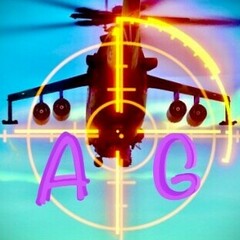

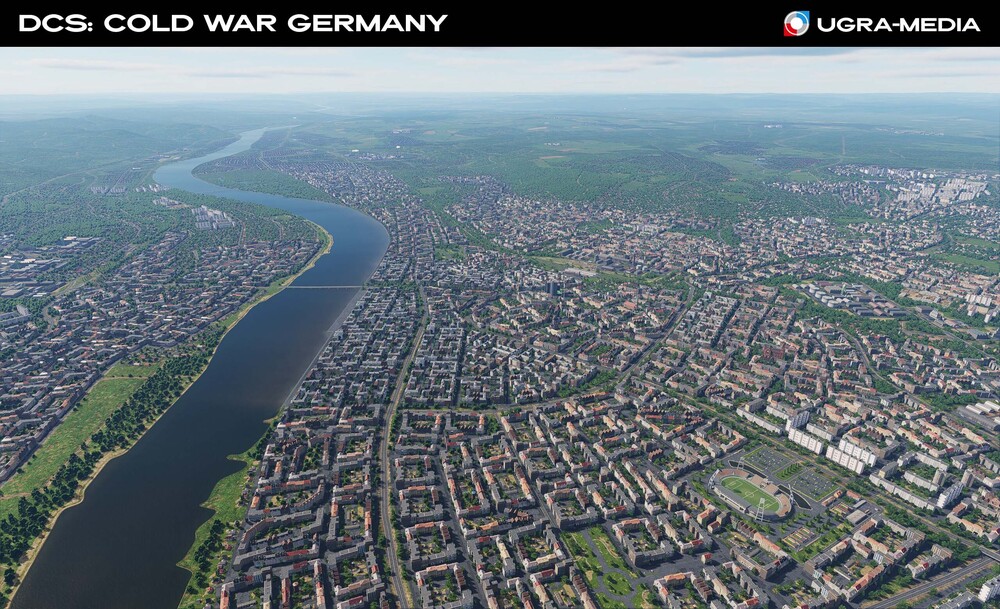
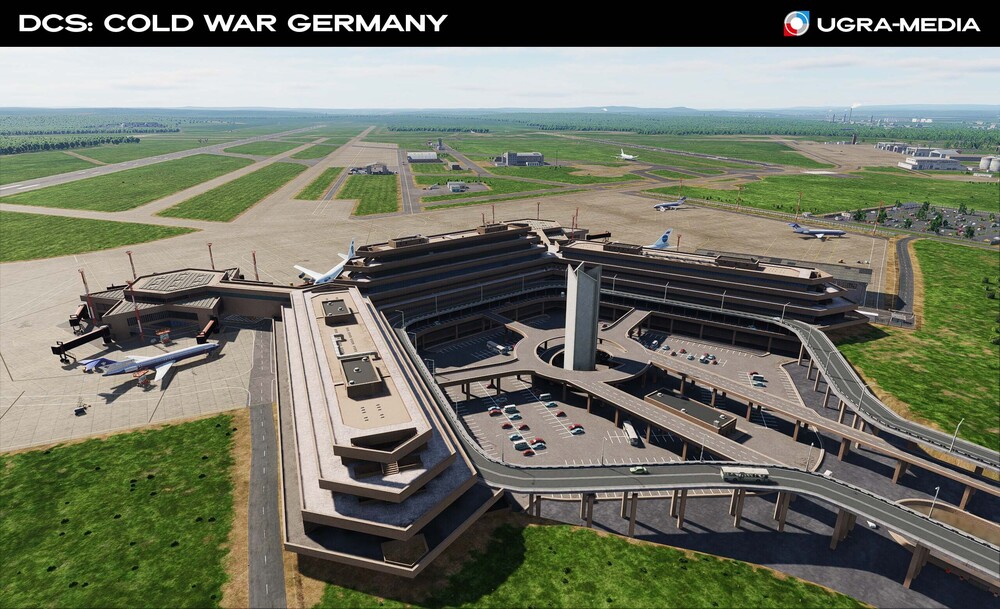
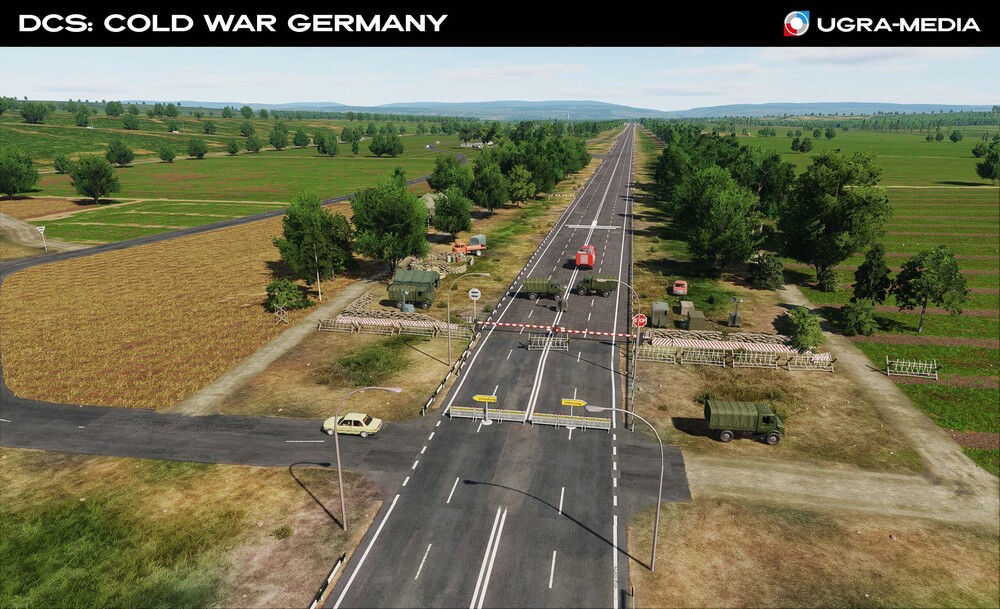
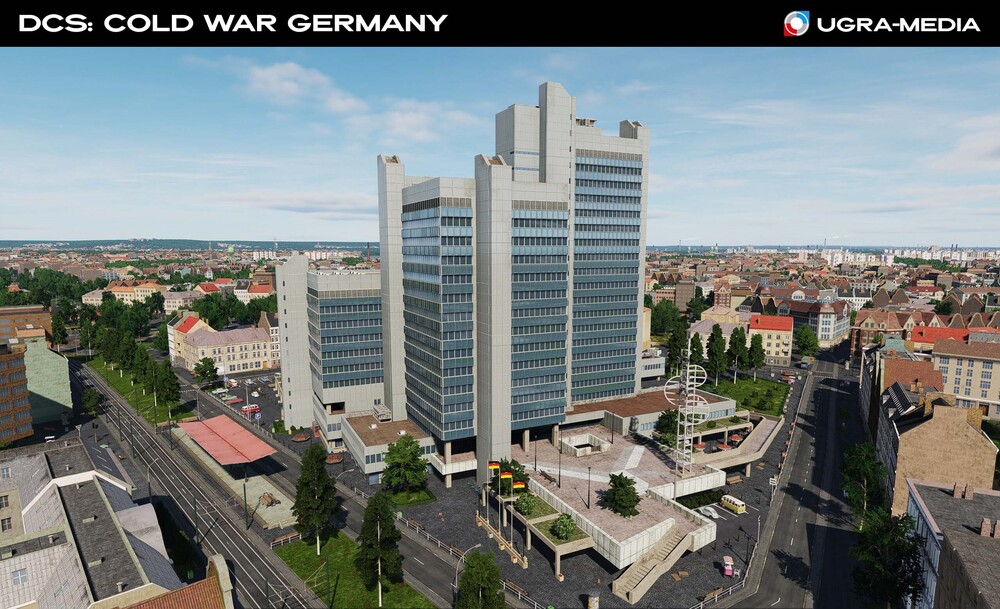

.thumb.jpg.07e84f874f3a61baedd97911b46ed5c5.jpg)
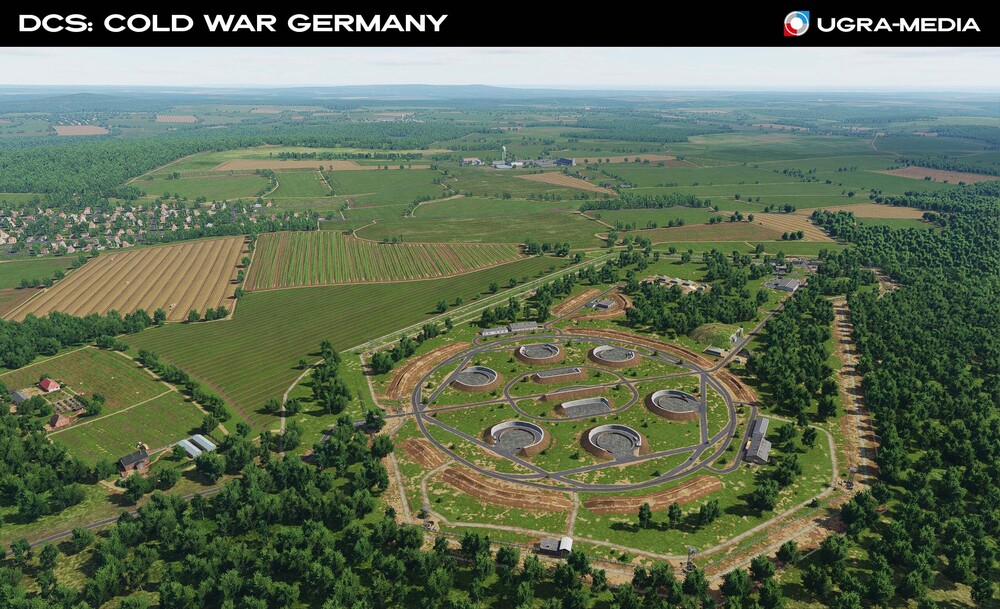
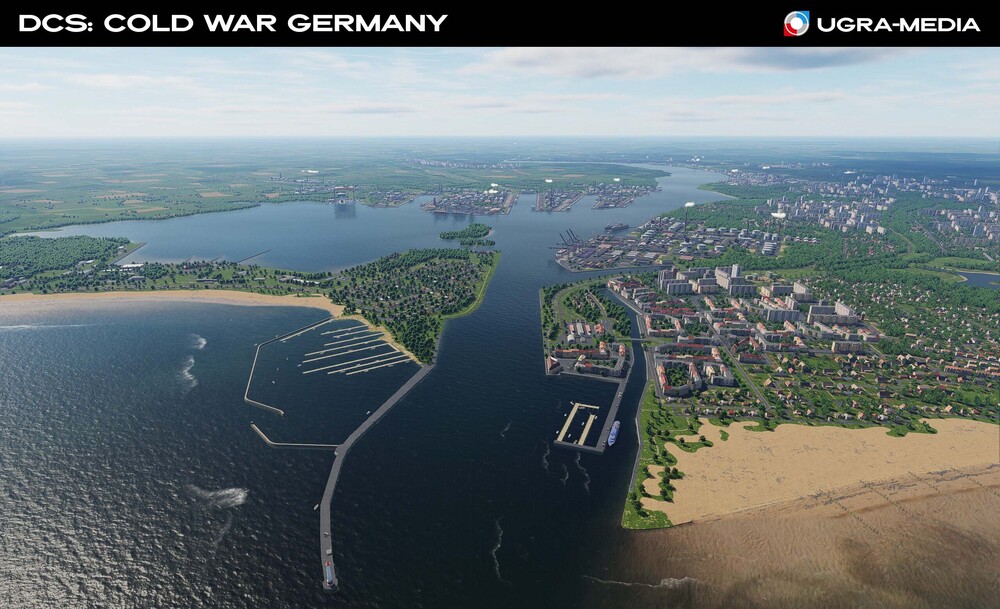


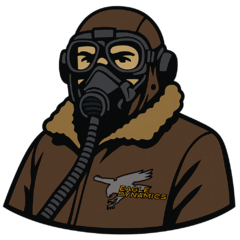
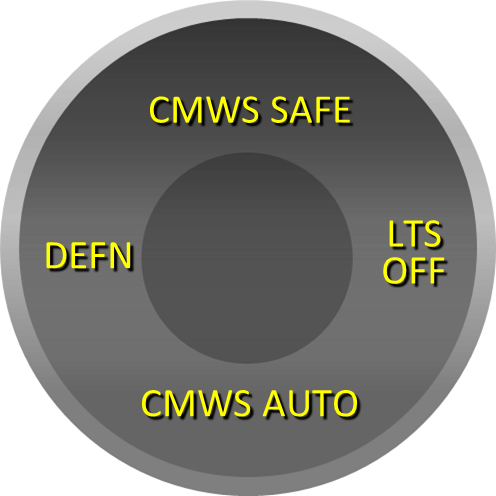
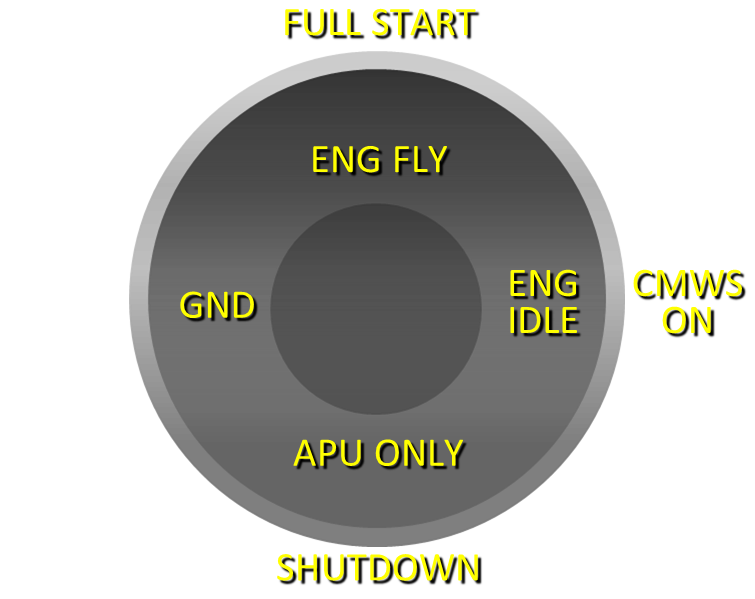
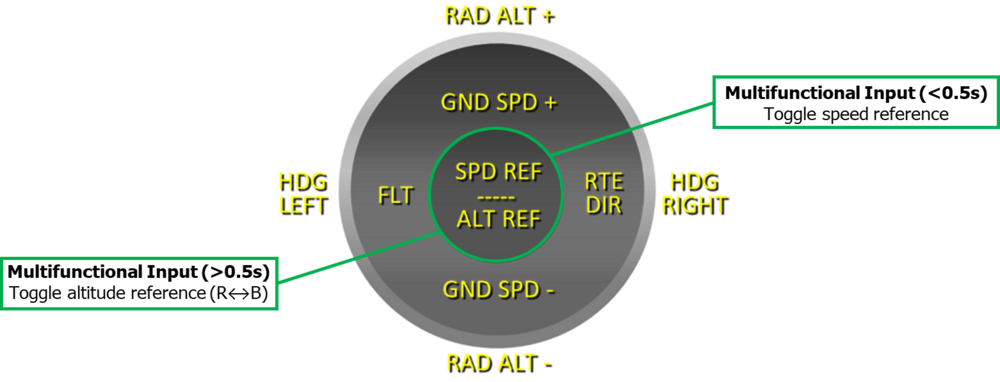

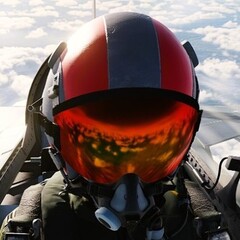


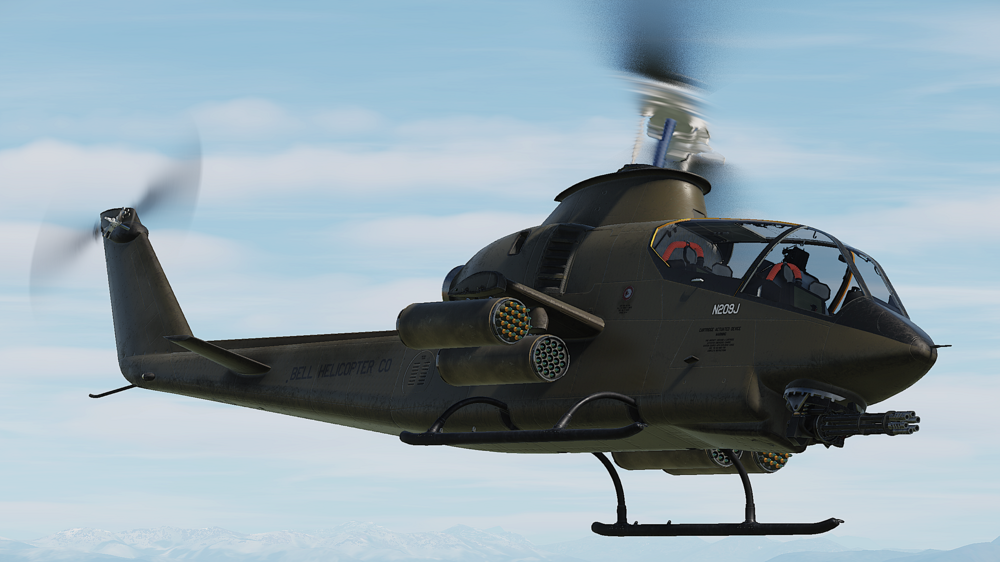
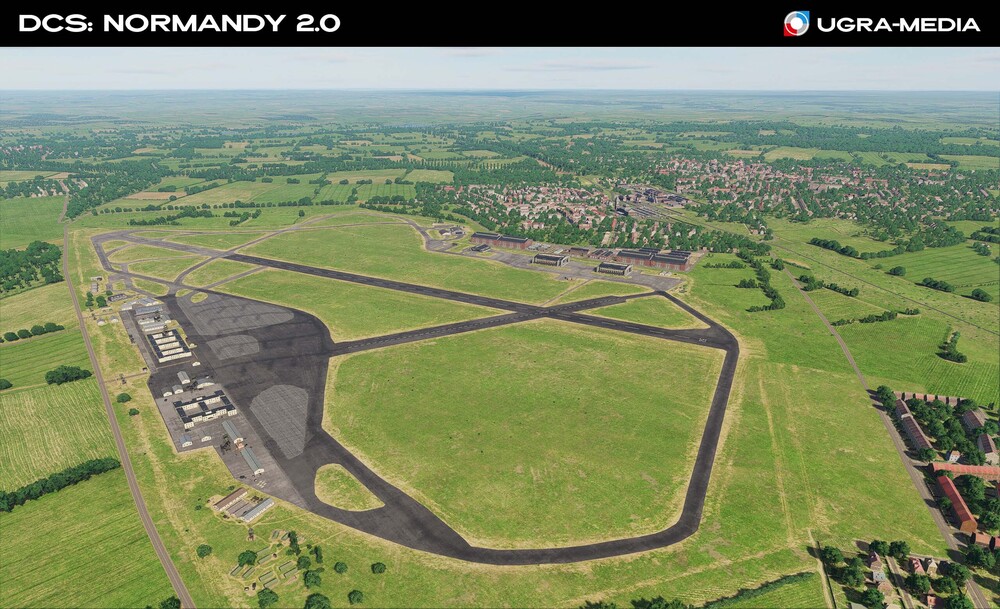
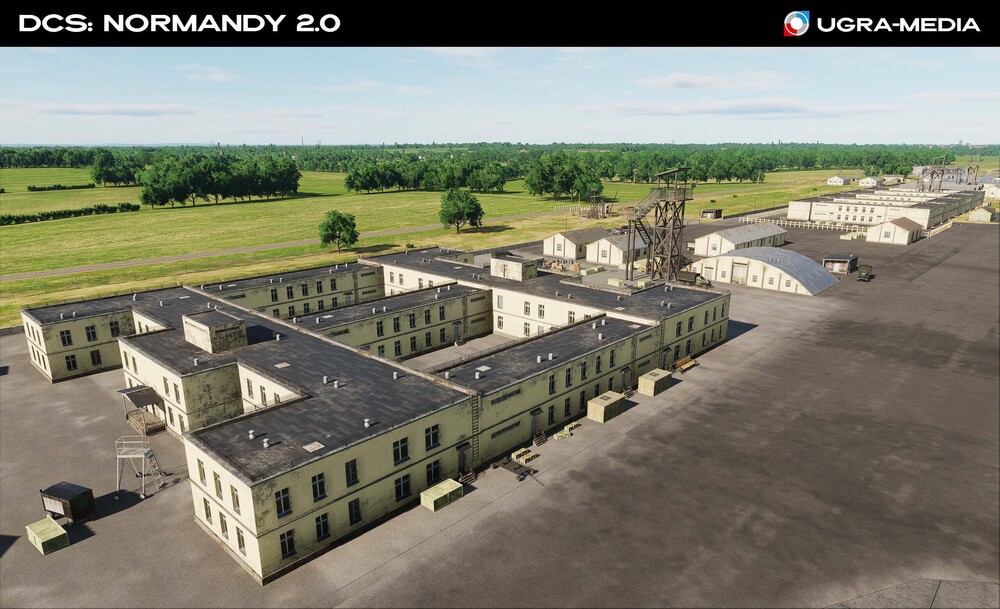
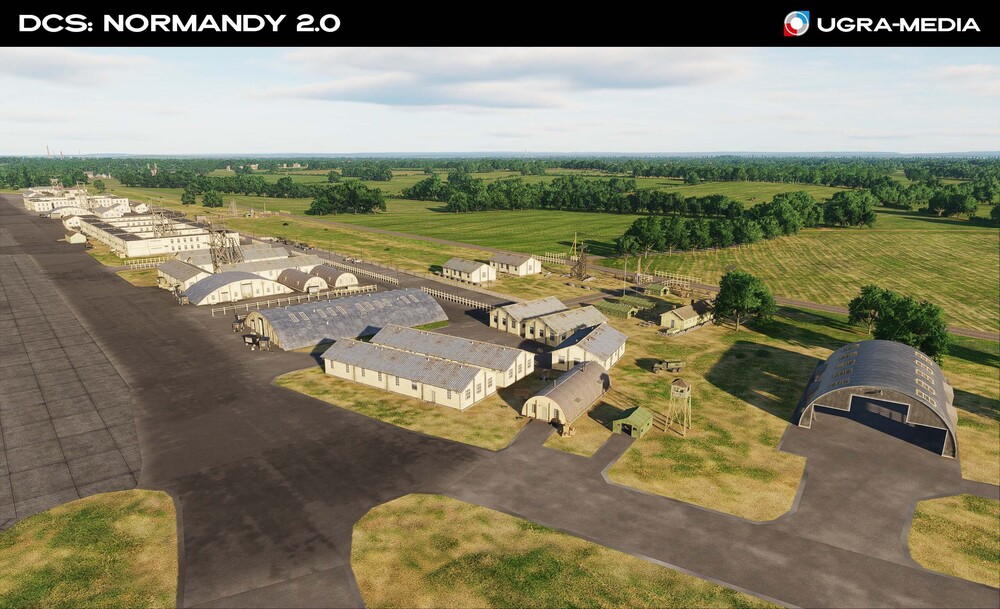
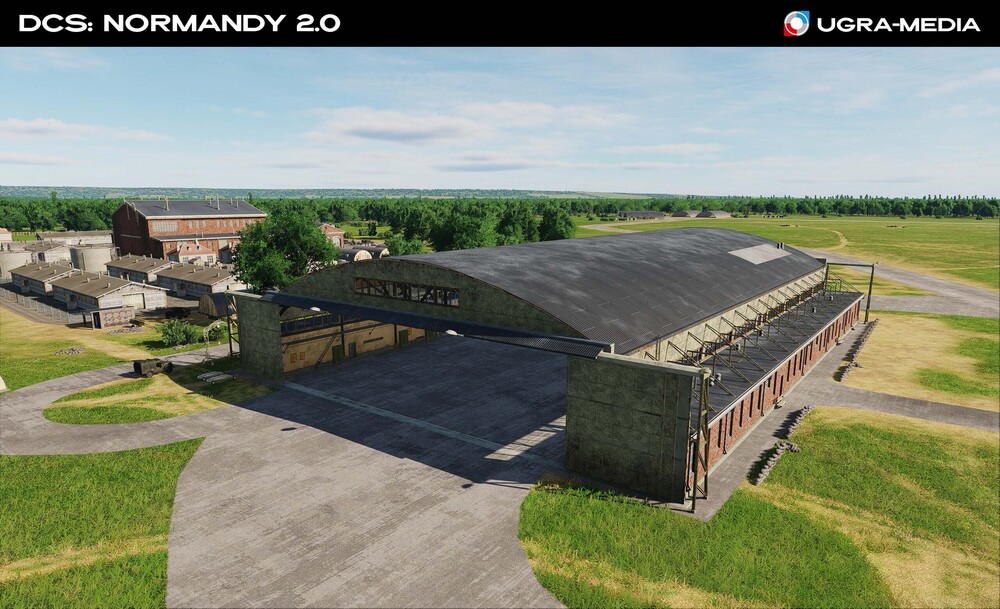
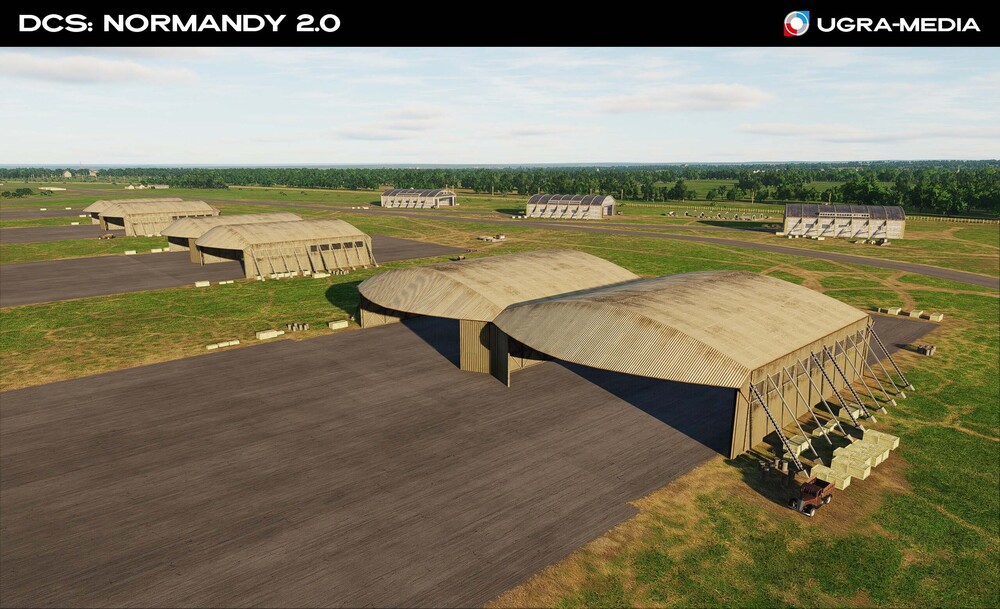
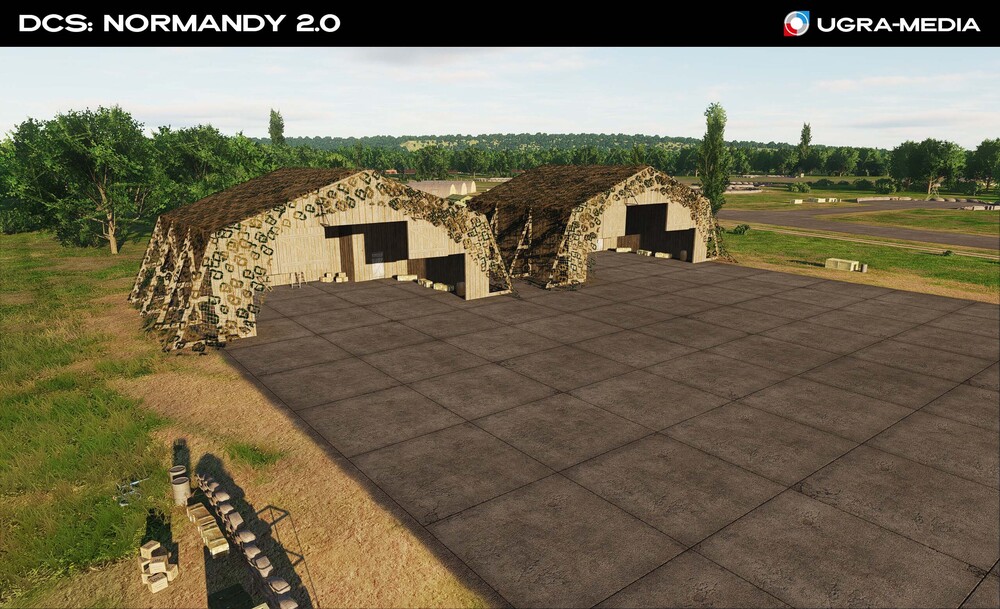
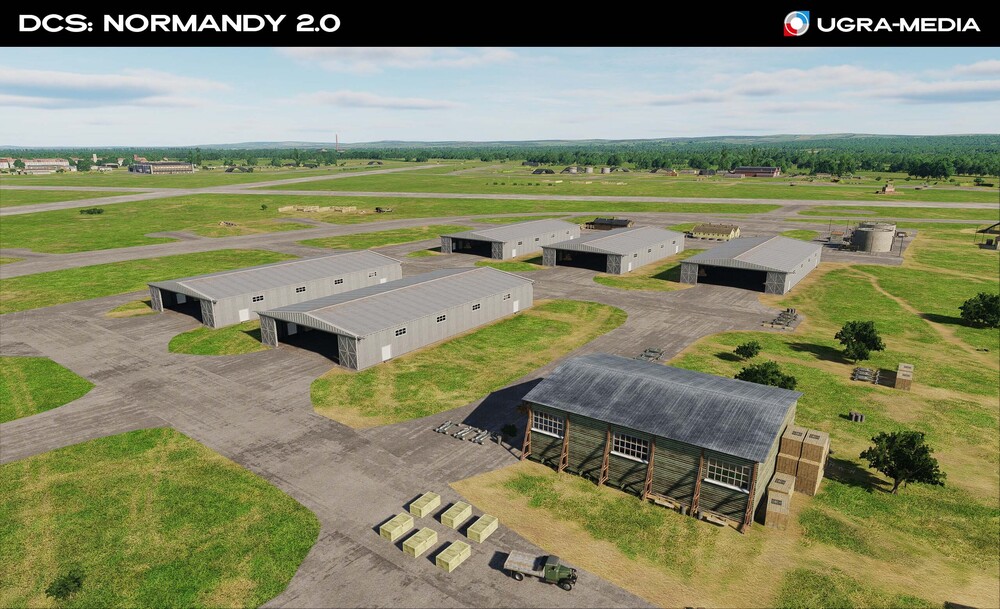
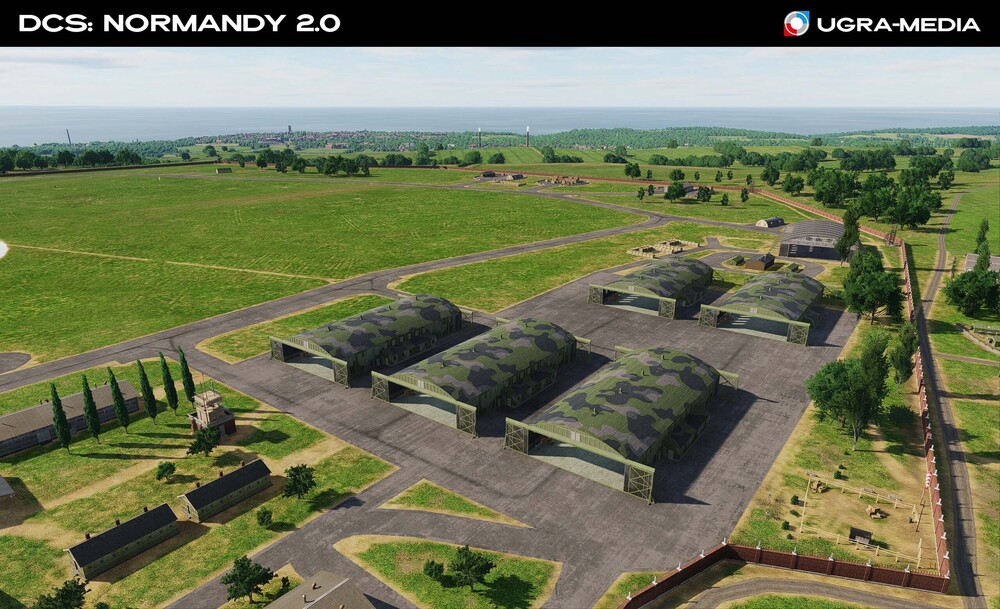
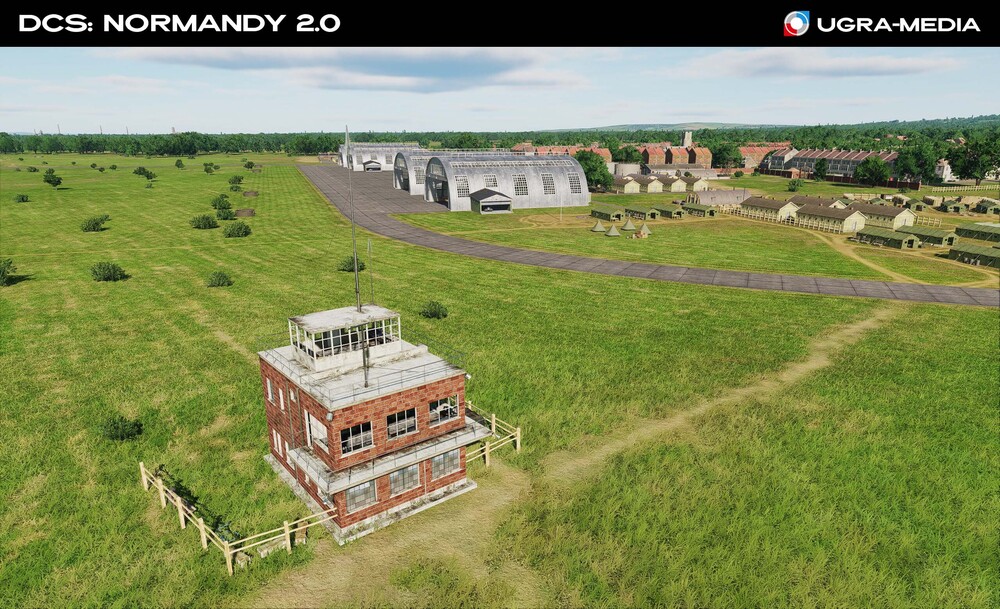

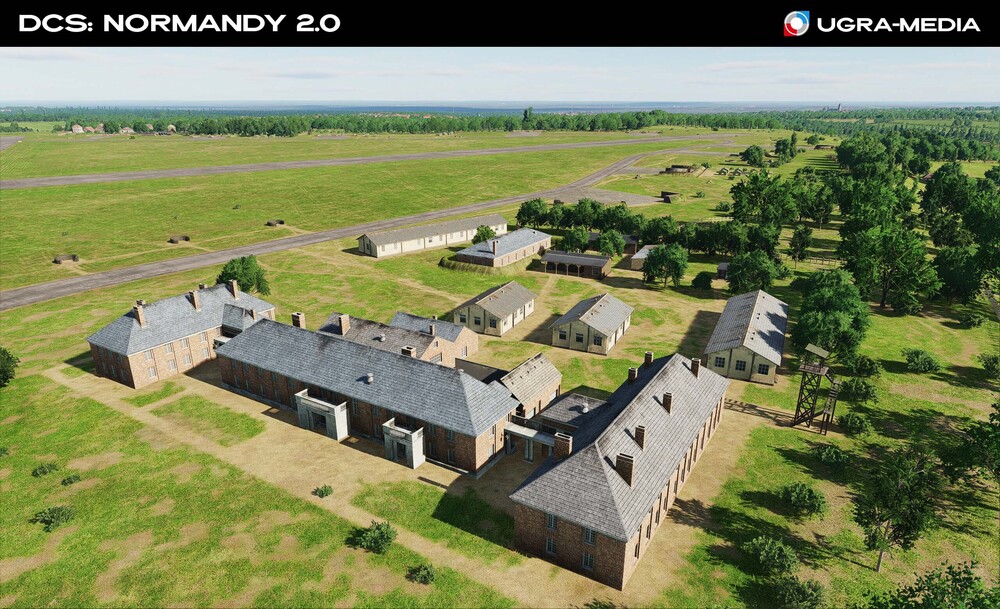
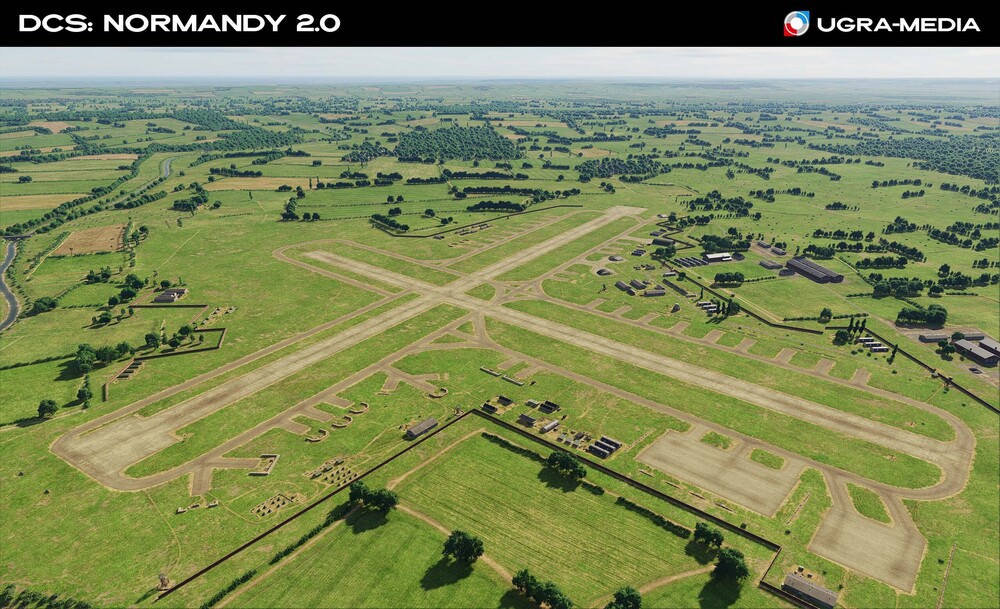
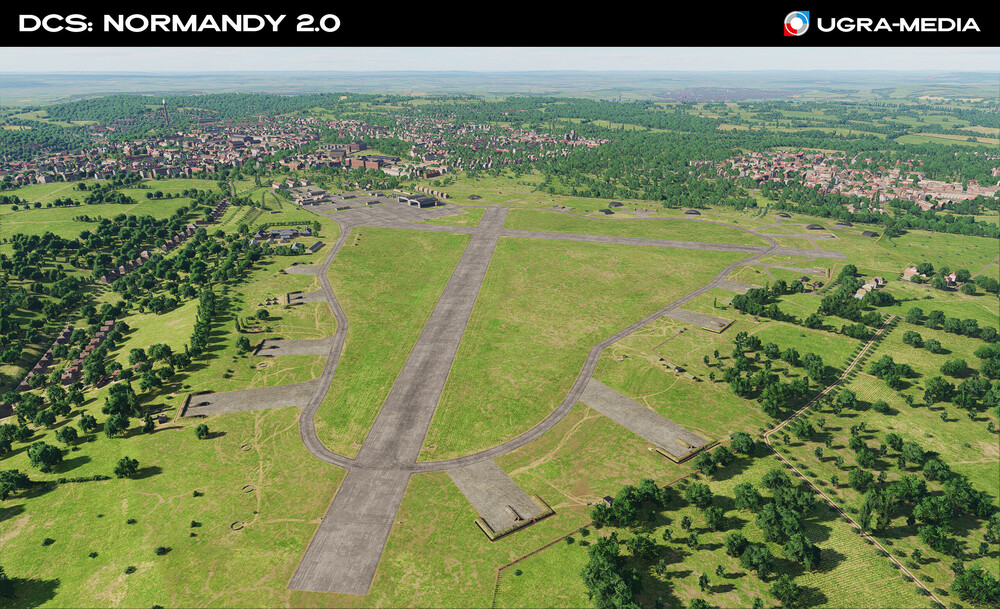
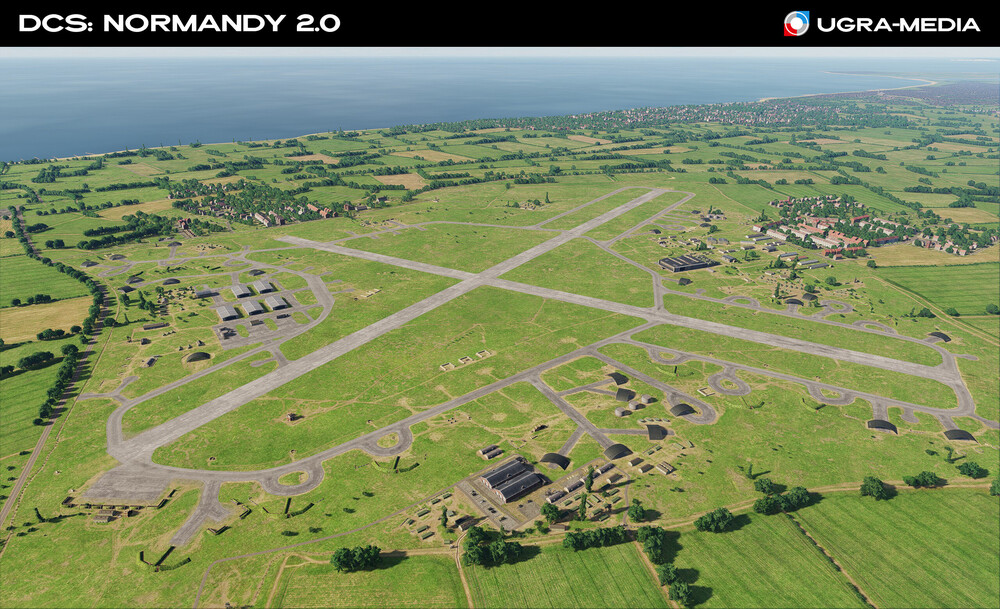
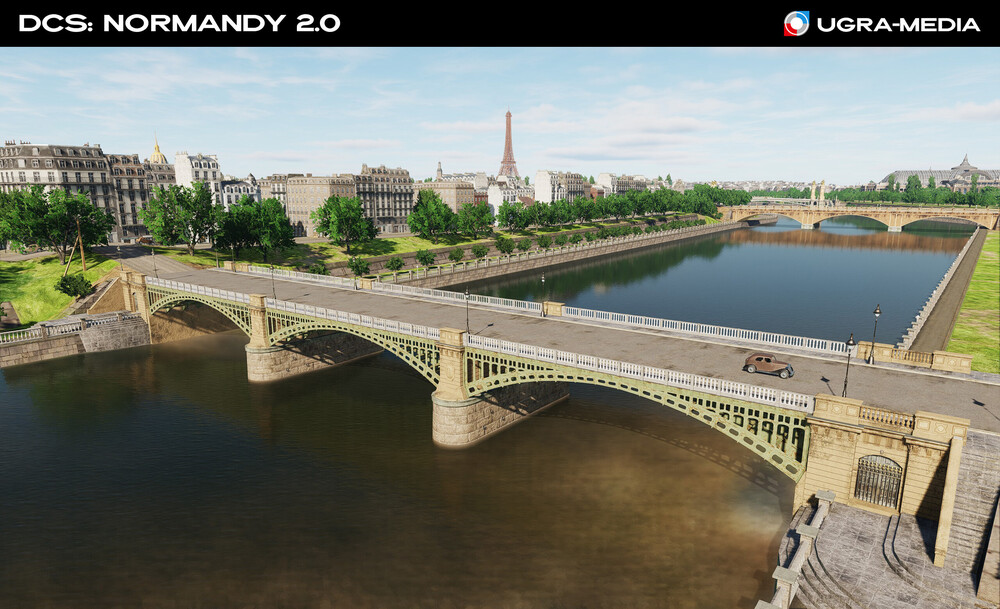
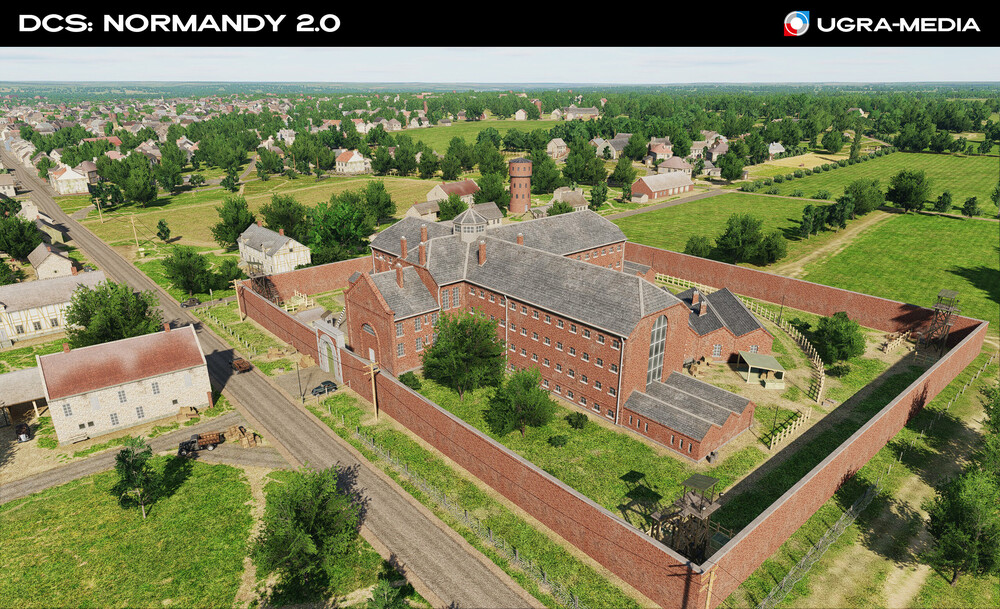



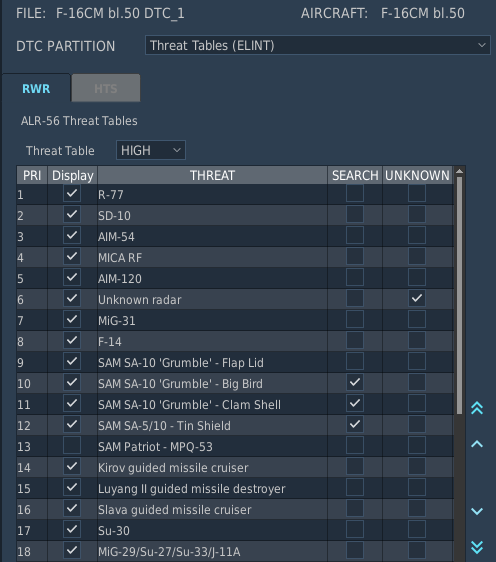
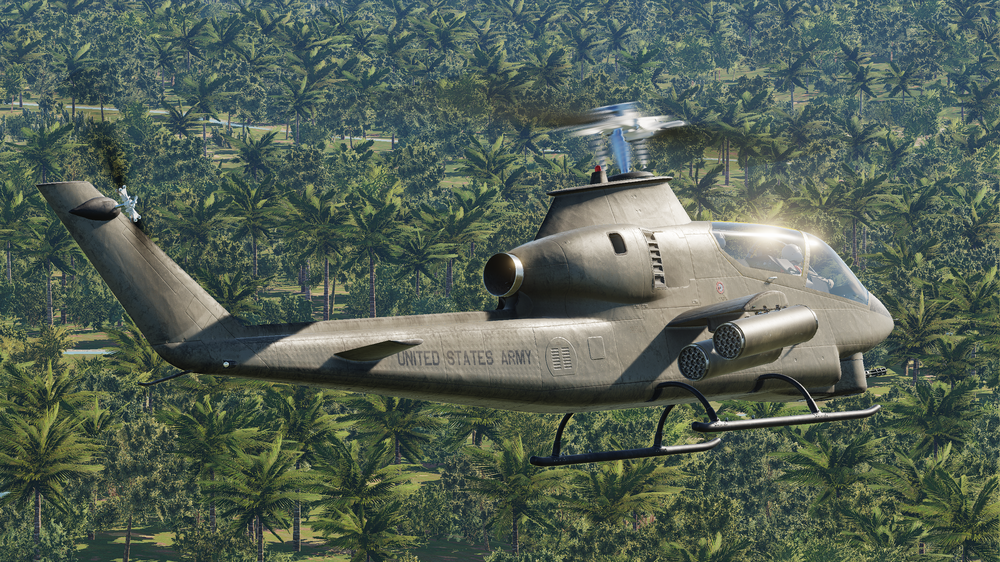
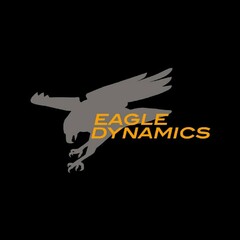
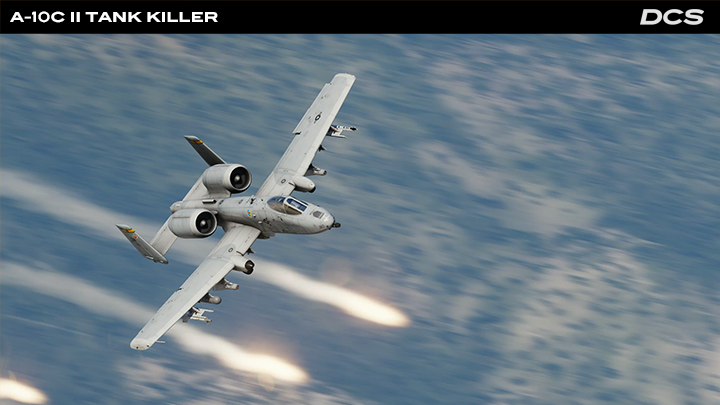
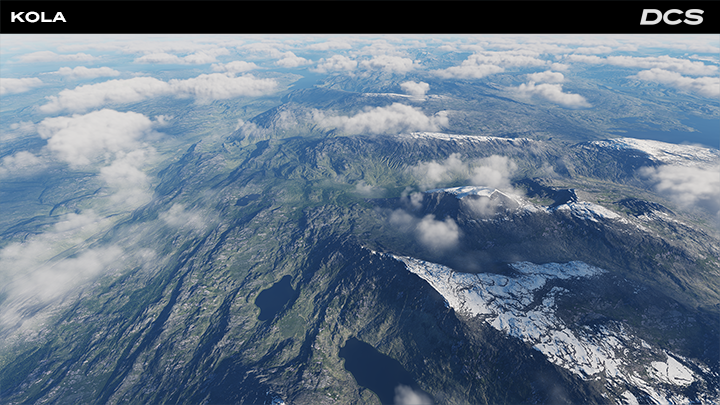
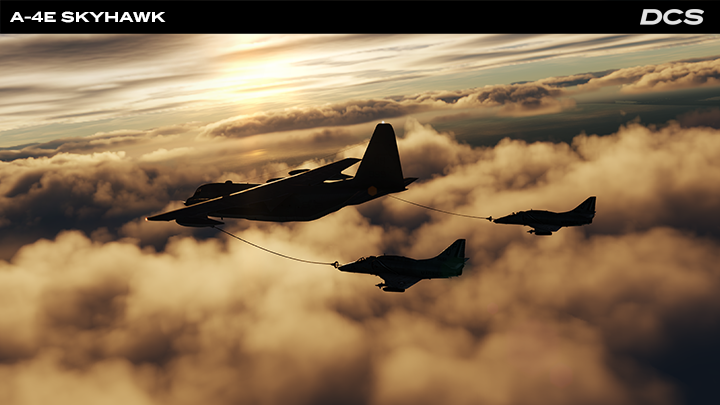

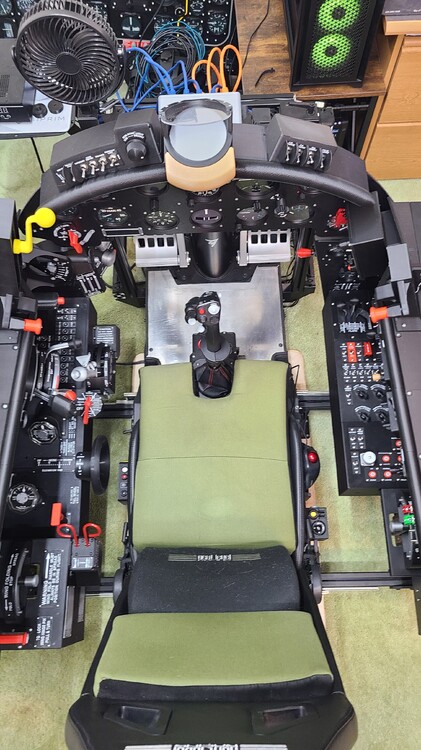
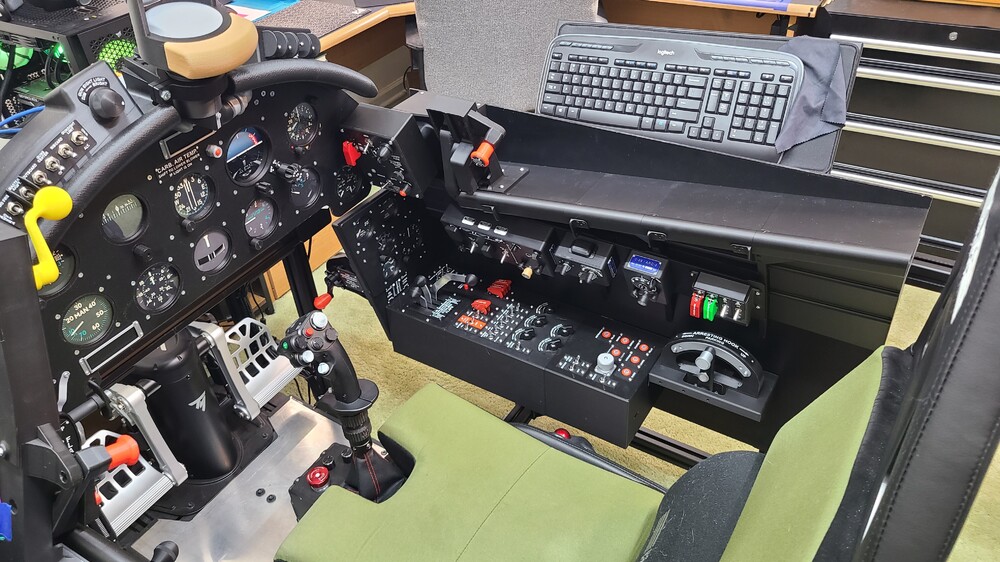

.thumb.jpg.1b2bd32f856c5da94f841d811c5a0999.jpg)


